Shirt Collar Types
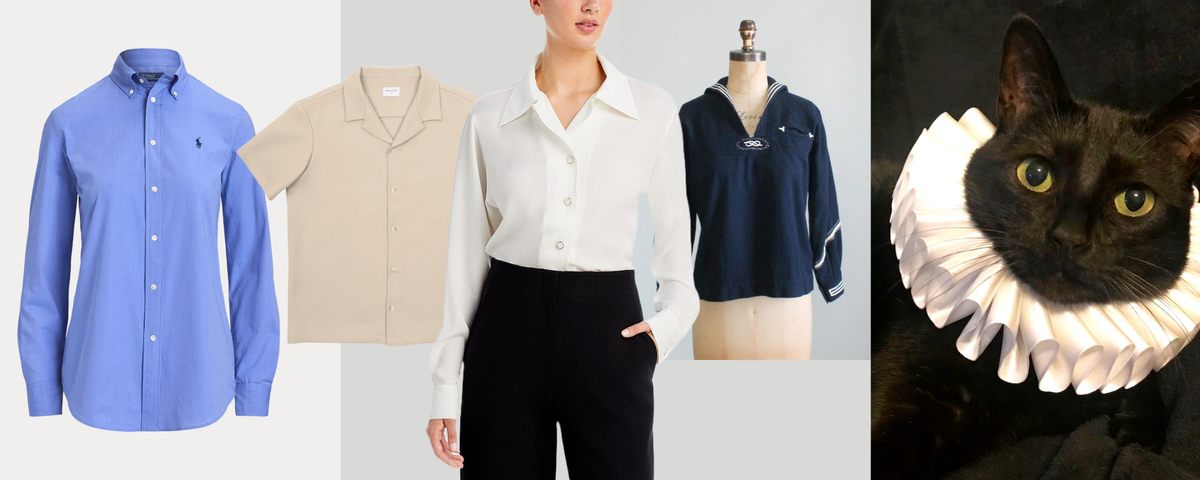
Of course, knowing the names of shirt collars is helpful in the same way it's helpful to know the types of chowder or pizza – it sets expectations for your order.
But that's not the main reason for us to delve into the topic; you can always google for a definition and an image. What's really salient to me is how the names clarify the context and history of a garment, and those are key for dressing for an occasion. Fashion is social, and the context of your outfit is its joy, anxiety, memories, identity, everything.
I divided the collars into visual categories to make it easier to find a collar by its shape.
Tailored dress shirt
Traditional
This collar has a narrower distance between the two collar points and thus a smaller space for a tie knot. It's known as American, and it goes from smart casual to classic office.
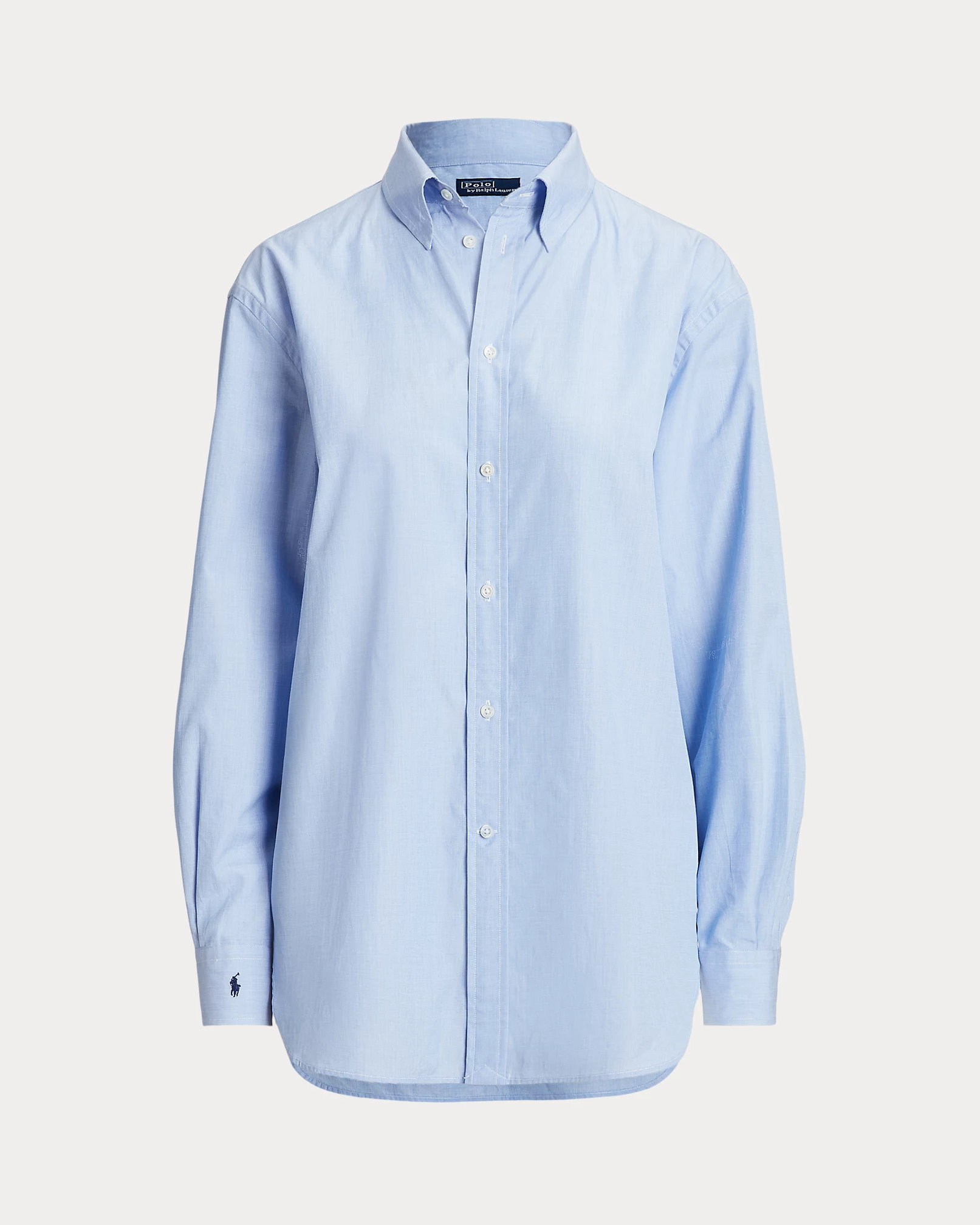
Button Down
The collar points button down to the body of the shirt. This style is more casual than the traditional. It evolved from shirts worn to play sports, and the buttons critically kept the collar away from the athlete's face.
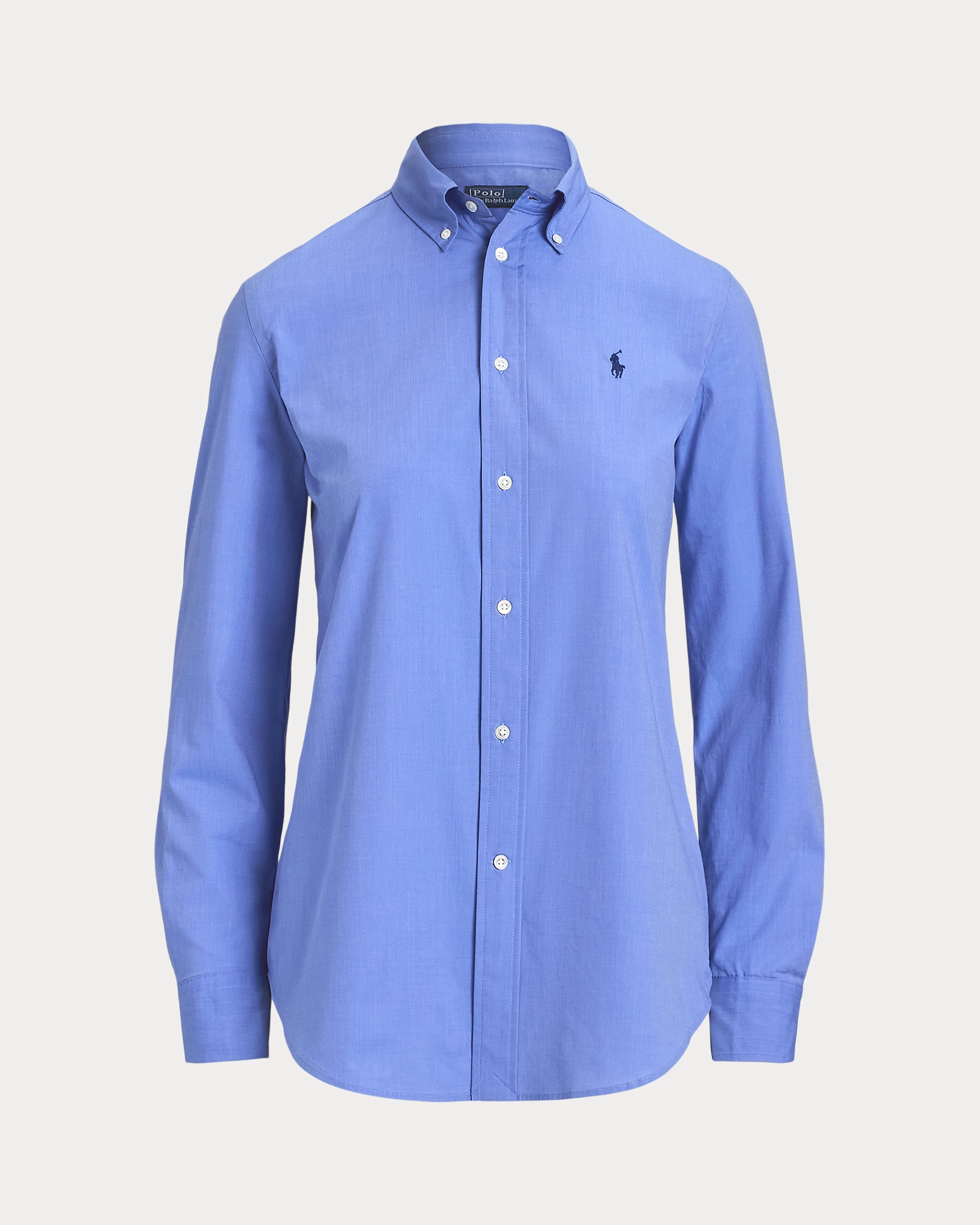
Spread
When compared to a traditional collar, the spread collar's points appear farther from each other. They create more room for a tie knot, and they're generally considered a bit more formal than traditional collars – but overall formality of a shirt depends numerous factors, including fabric, color, pattern, and how it's worn. The spread collar is more common in Europe than Stateside.
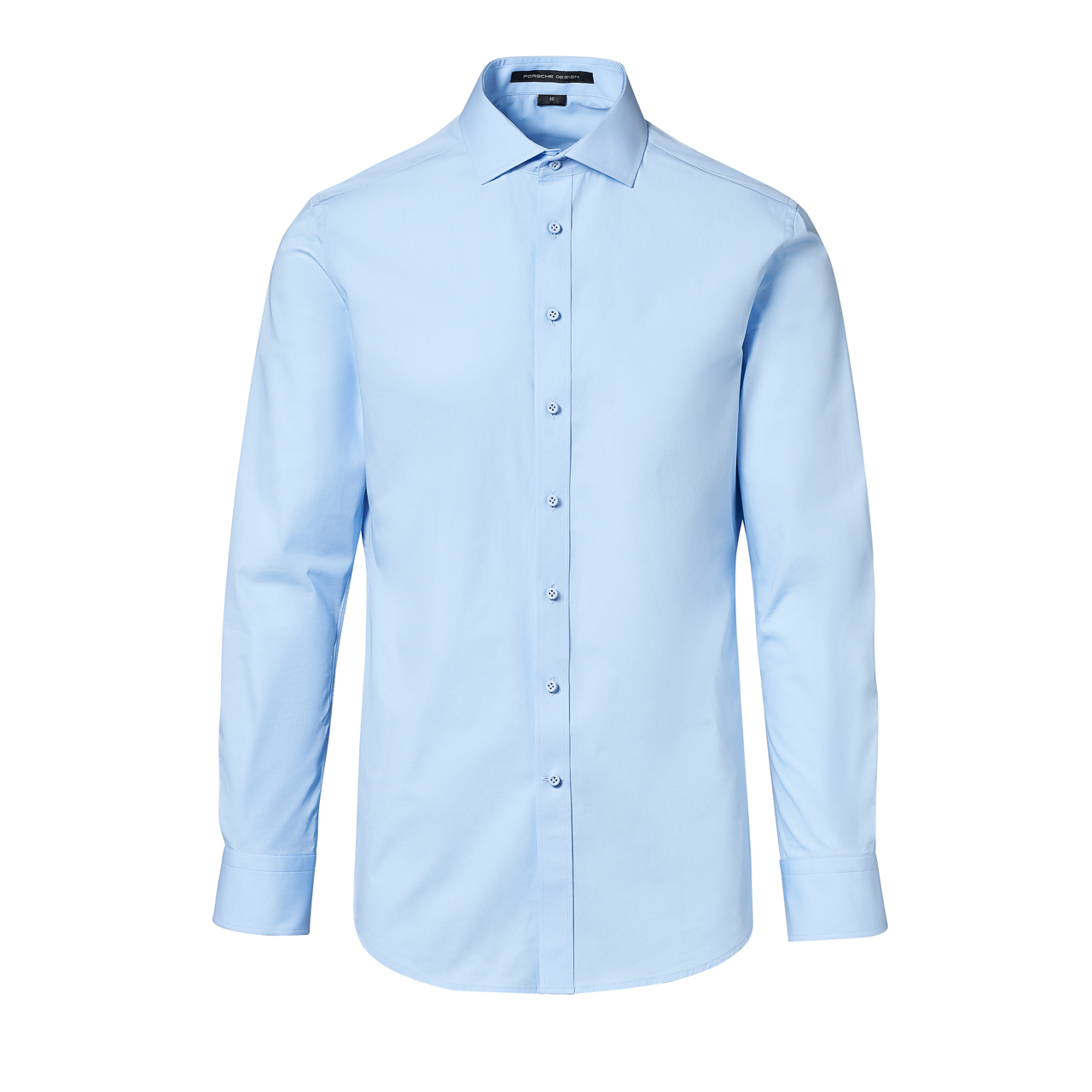
Wingtip
The wingtip collar also features a wide space between the points, and it's perfect for bow ties. The collar itself is really short, stiff, and formal. It's commonly used for shirts that pair with tuxedos and often has a collar stud at the neck, as does this Ralph Lauren shirt:
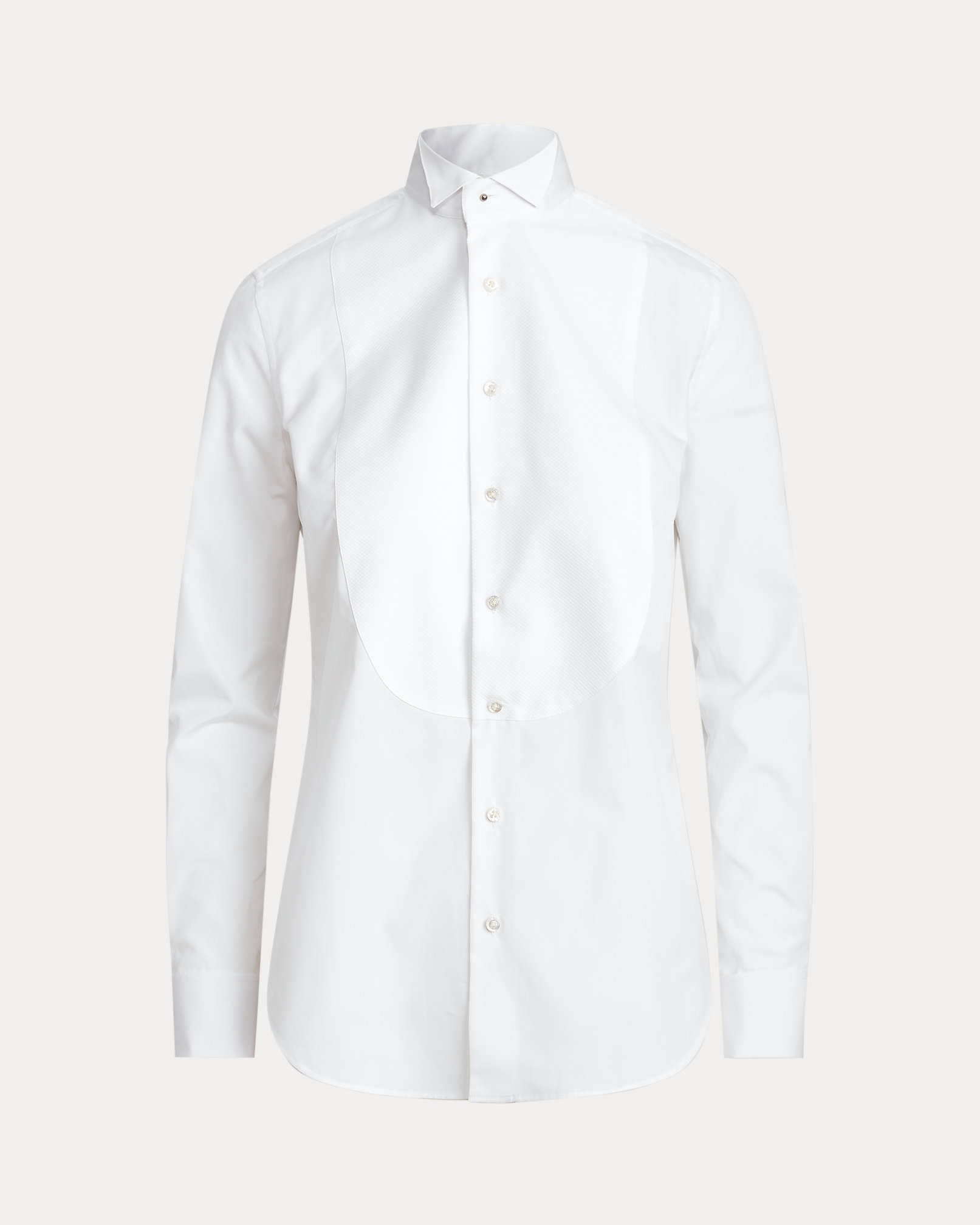
Convertible Collar
A convertible collar is made to be worn with the top button opened or closed.The top button is closed with a buttonhole or a little loop. It was a key feature of the U.S. Army's tropical combat uniform, particularly the U.S. Army's M-1941 summer uniform.
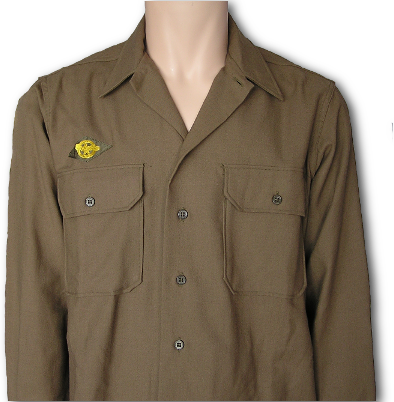
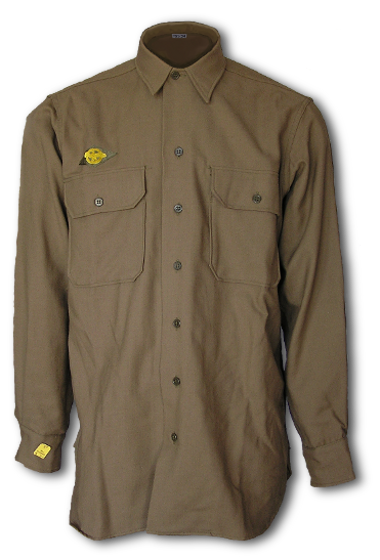
U.S. Army Men's 1944 Shirt, convertible collar open and closed
Camp Shirt
Popular now in 2024, the camp shirt draws from Cuban workwear of the 1900s and first gained widespread popularity in the United States in the 1950s. The collar lies flat and open at the neck. In fact, it has no stand; it continues the shirt front. The collar may appear on any silhouette, but a camp shirt in particular has a boxy silhouette and short sleeves.
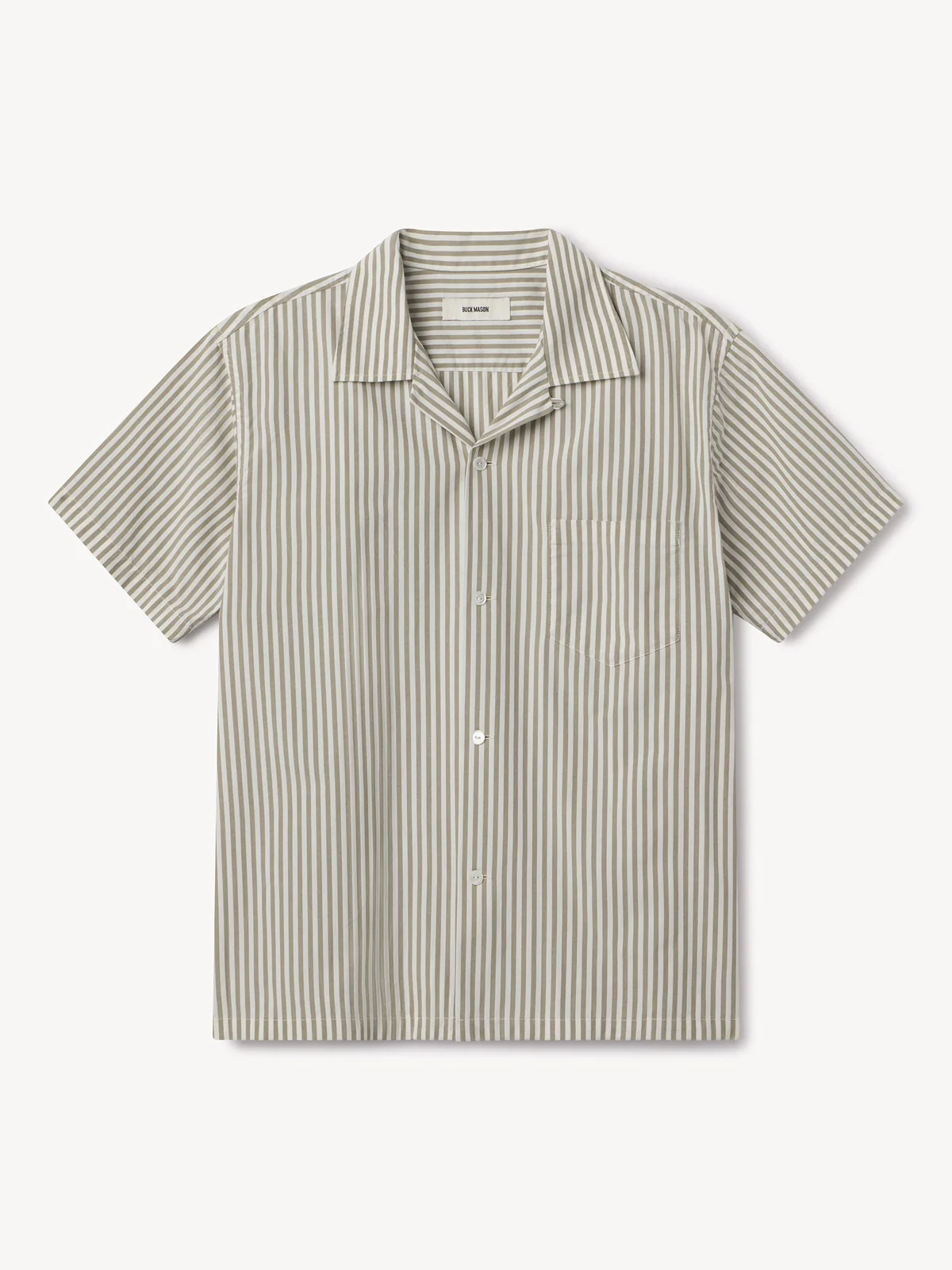
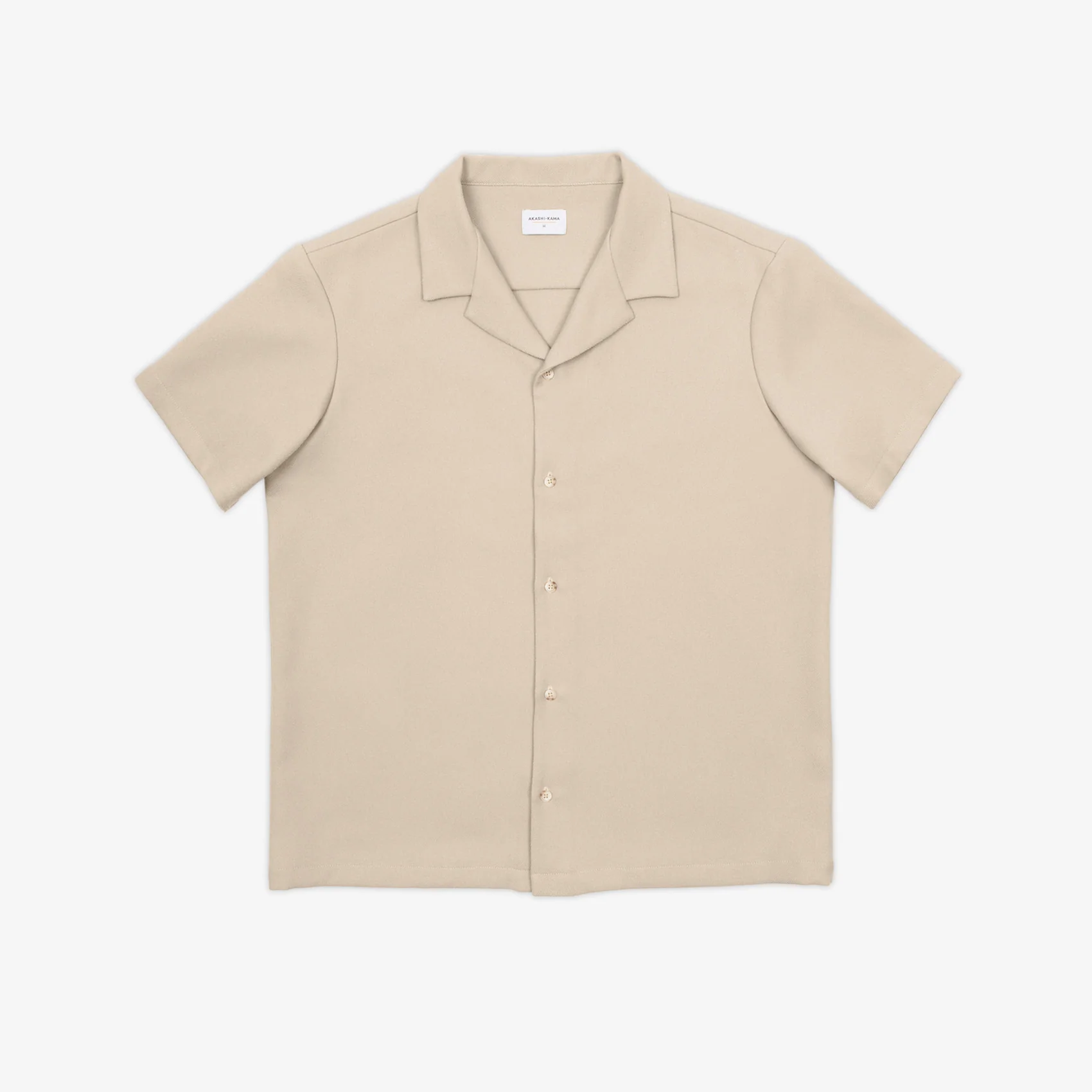
Buck Mason's camp shirt with a loop for the top button, and Akashi-Kama's Kama camp shirt without a top button
Notched Collar
A notched collar stands up slightly before folding over, unlike the flat camp shirt collar. It's a bit more formal, too, and you'll see it more on dresses than shirts. It looks a lot like a blazer collar.

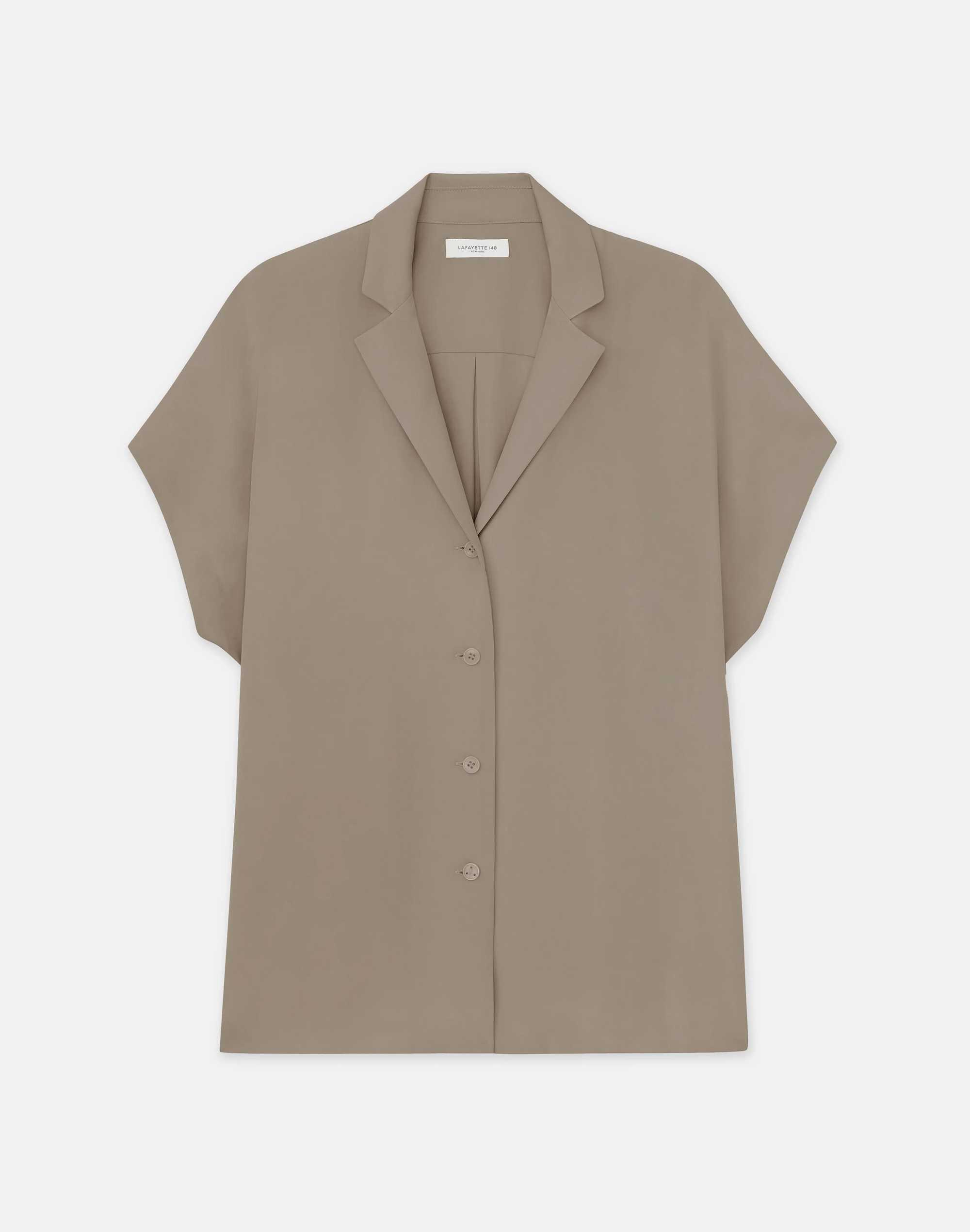
Isla Fisher in a Ralph Lauren Hampton dress, and Lafayette 148's notched collar silk blouse
V-Neck Collars
Johnny Collar
A Johnny collar, also known as a golf collar, is a soft, rounded collar that's typically smaller and less formal than a standard dress shirt collar. It tends to look more relaxed and sporty, at home with casual or smart casual looks, and it's usually fabricated in more casual fabrics, including knits.
It sits atop a V-neck that's cut out of the front of the shirt; the collar band ends could not meet the way a dress shirt can be buttoned all the way up to the top collar button. It's low to the chest, and you won't see it with a tall or even standard collar stand.
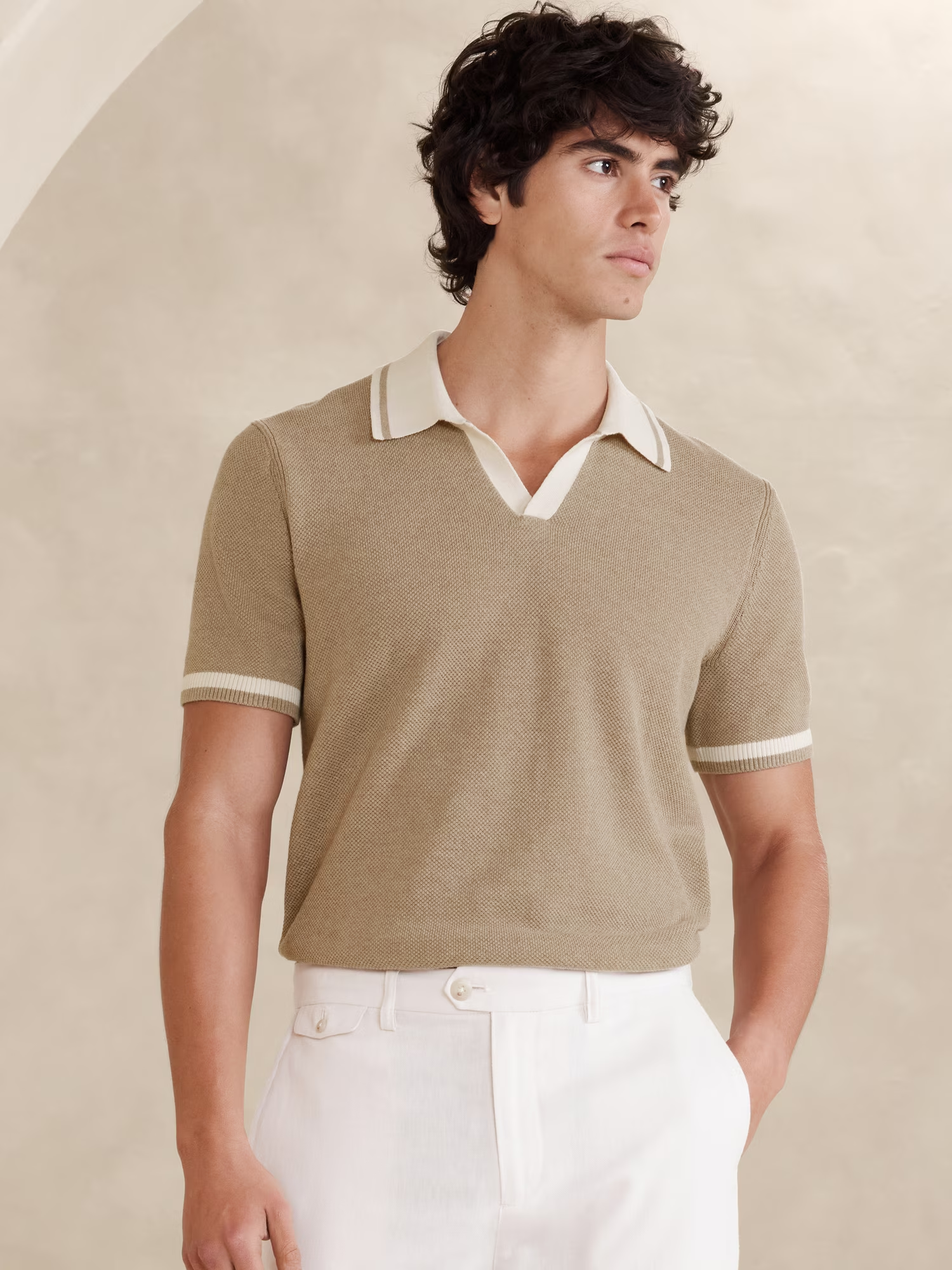
Polo Collar
The polo collar arrives from polo shirts, and it's usually made from knits or soft wovens. Unlike the Johnny collar, the polo collar base can meet in the center – polo shirts with button plackets can be buttoned all the way up.
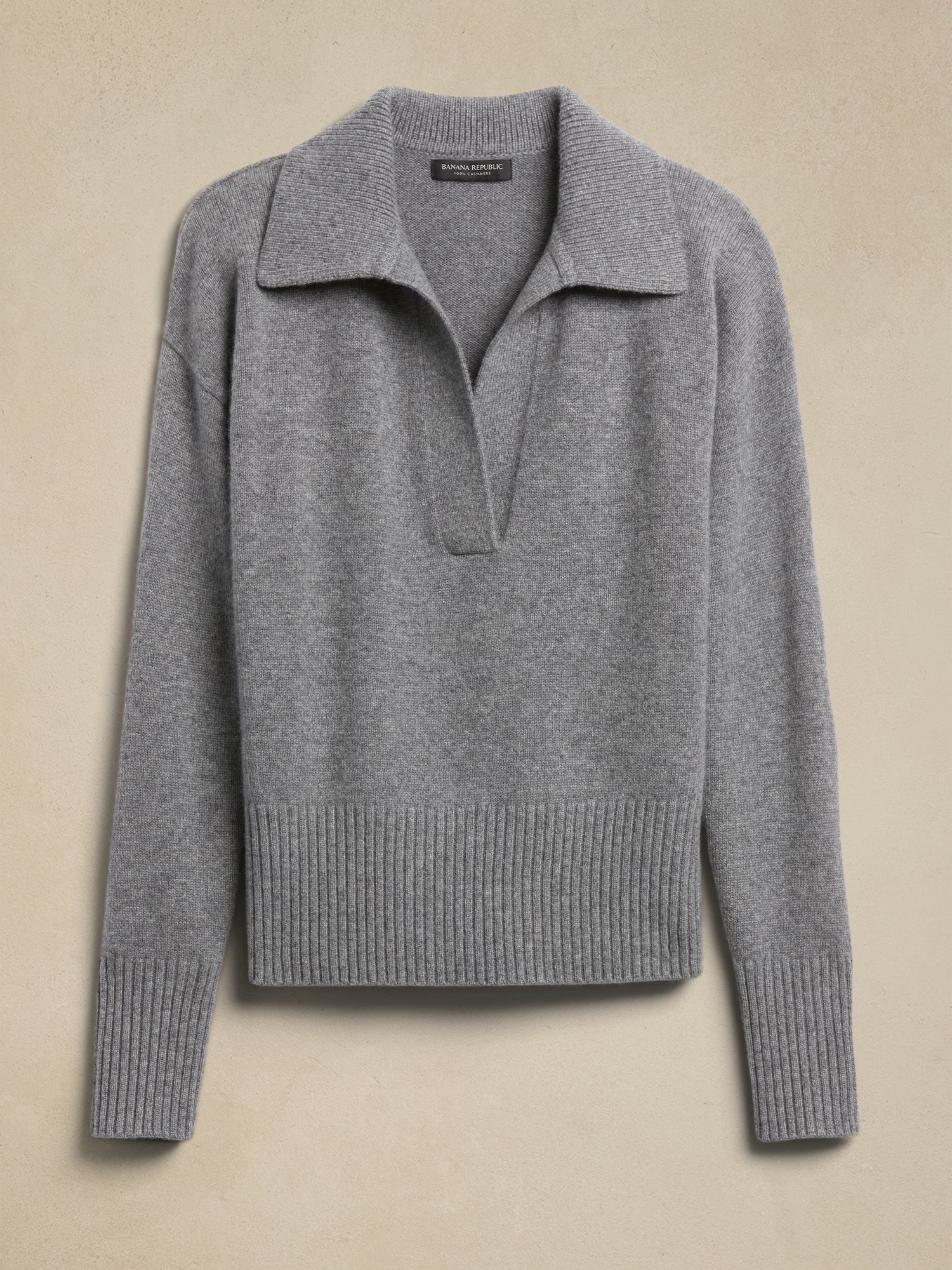
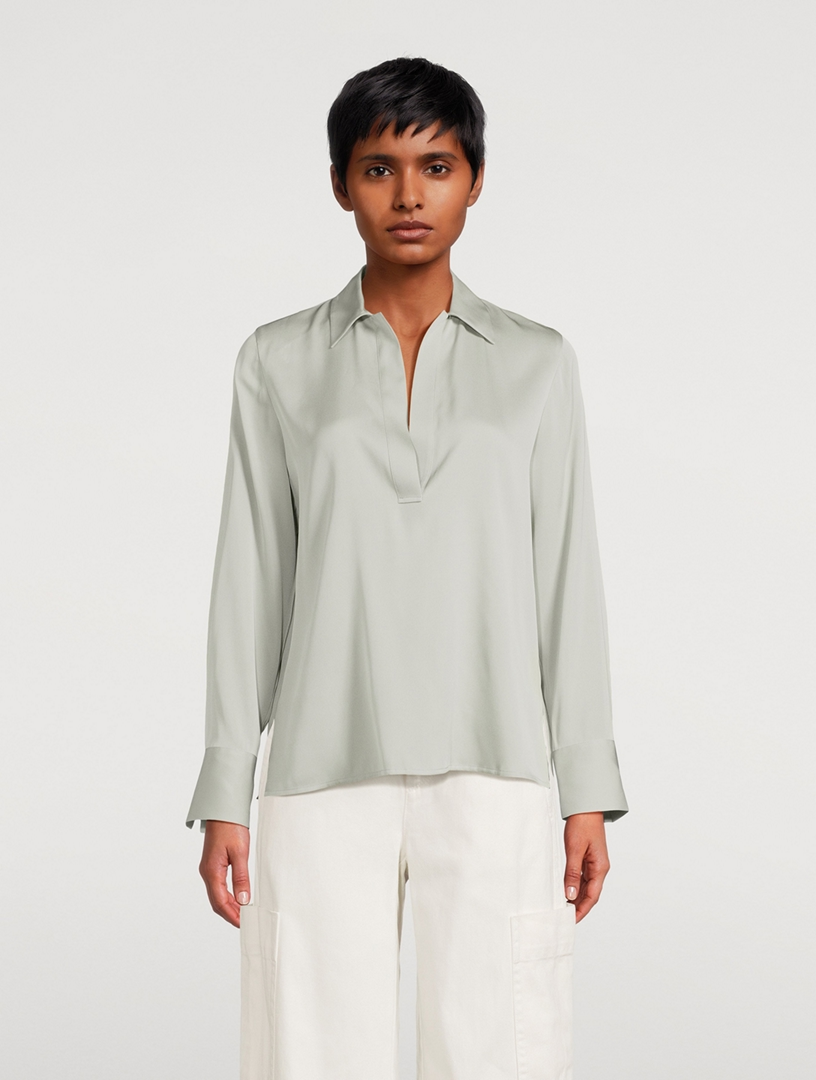
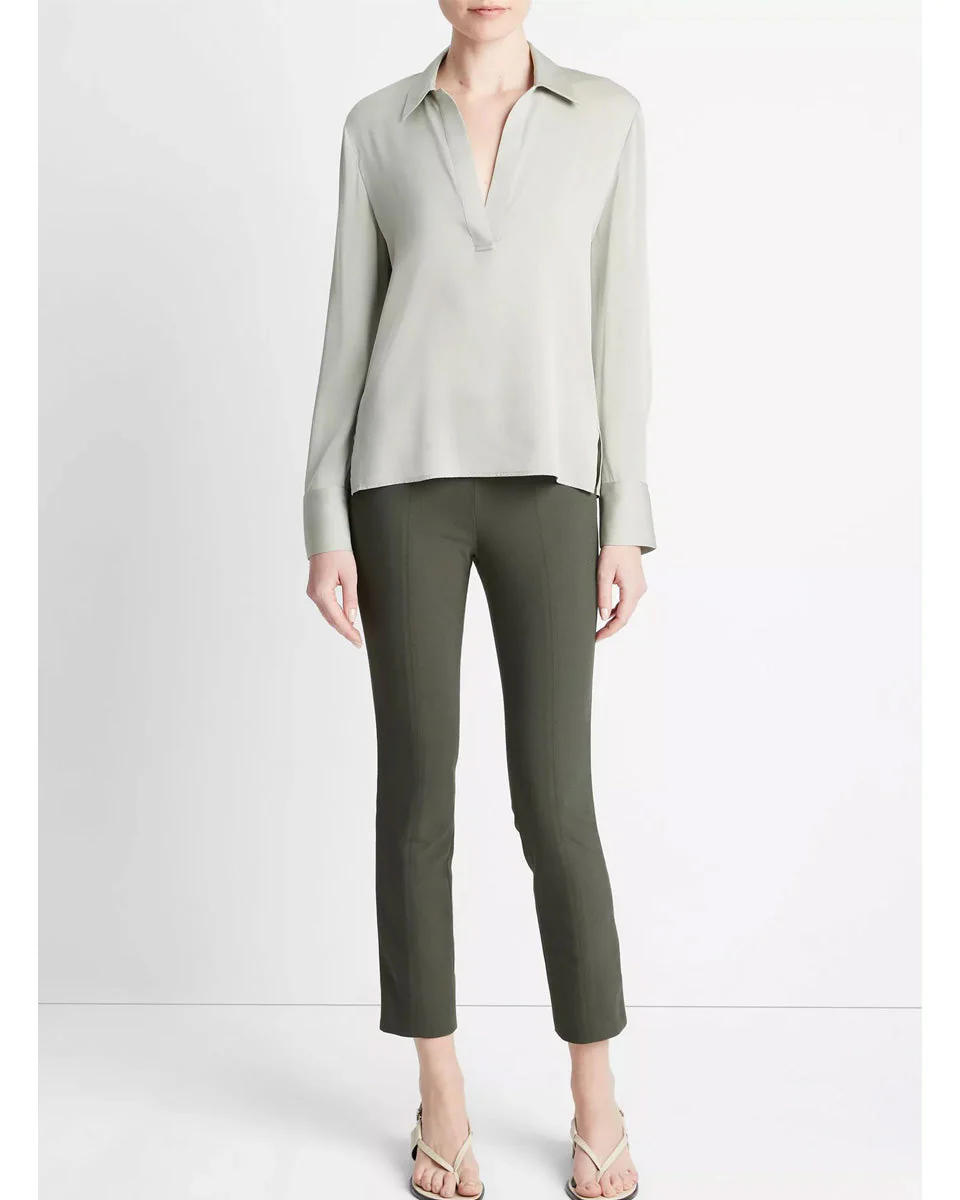
Banana Republic's Luna sweater; Vince's vince stretch-silk polo blouse worn more closed or open
Middy Collar
U.S. Navy middy shirts from the early 20th century inspire the middy or sailor collar, with its distinctive rectangular panel in the back. Even though the extra fabric was designed to provide protection from the sun, it has evolved to take on a decorative connotation alone, lending it more of a kitschy vibe than that of other collars inspired by military uniforms.
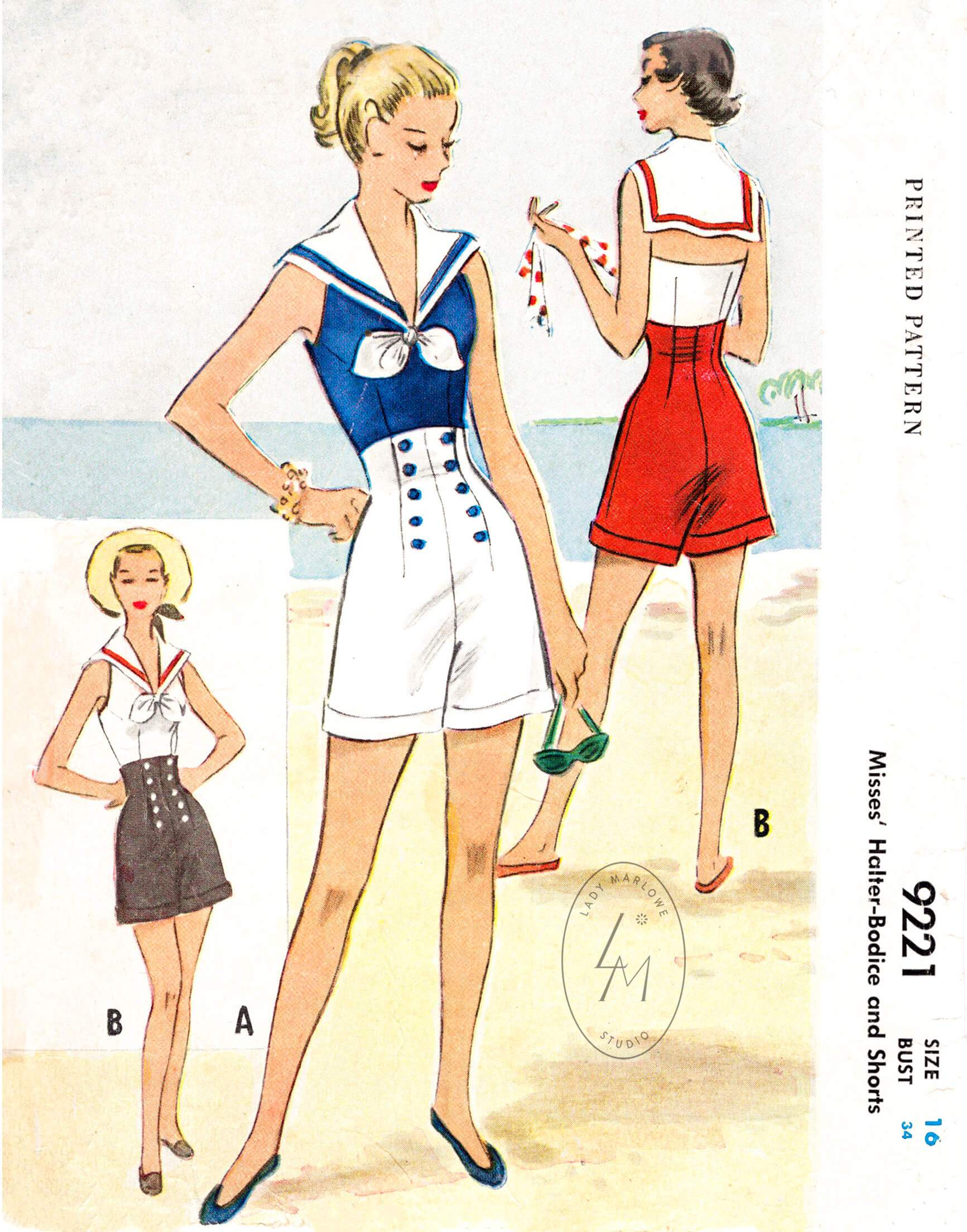
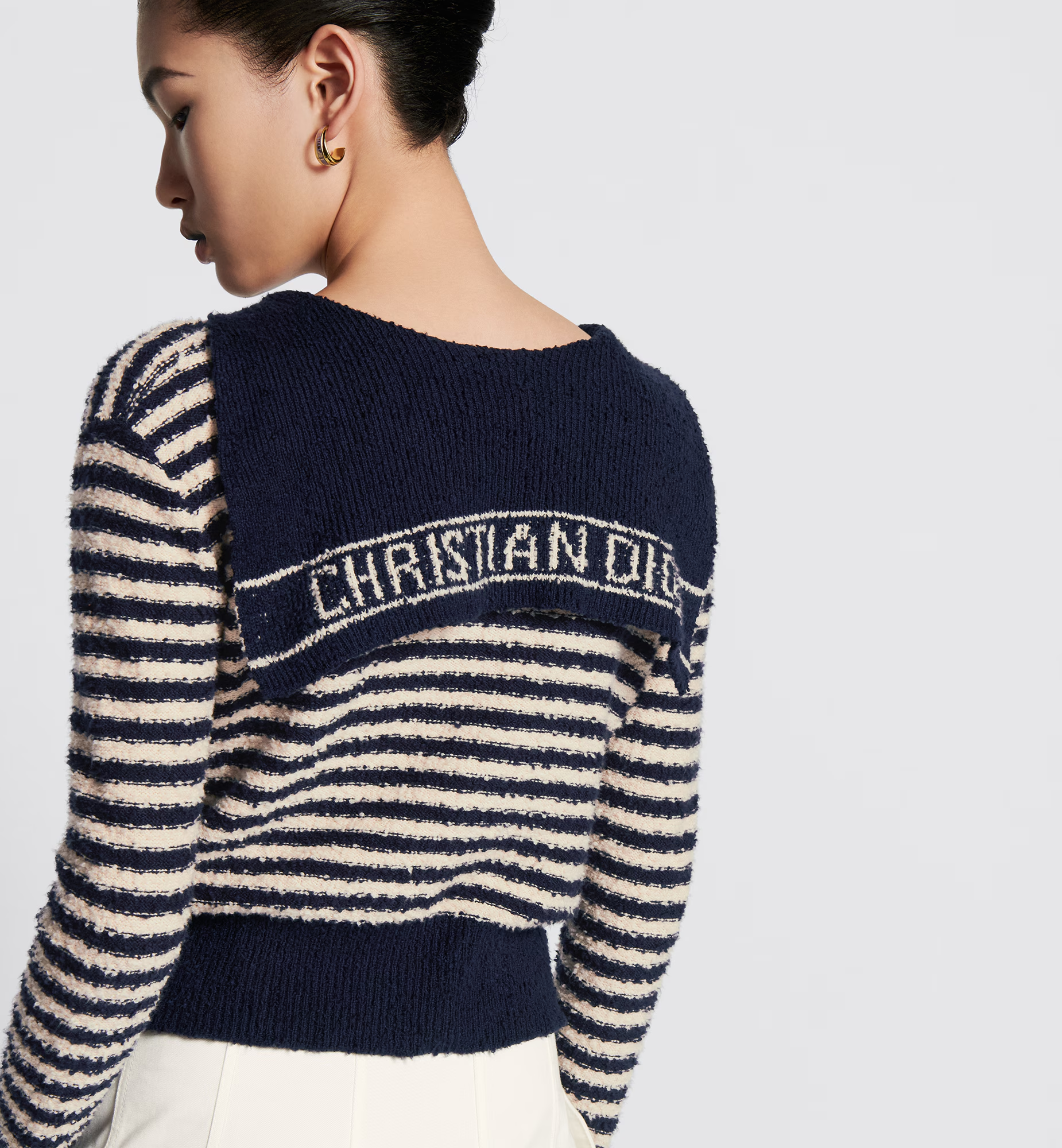
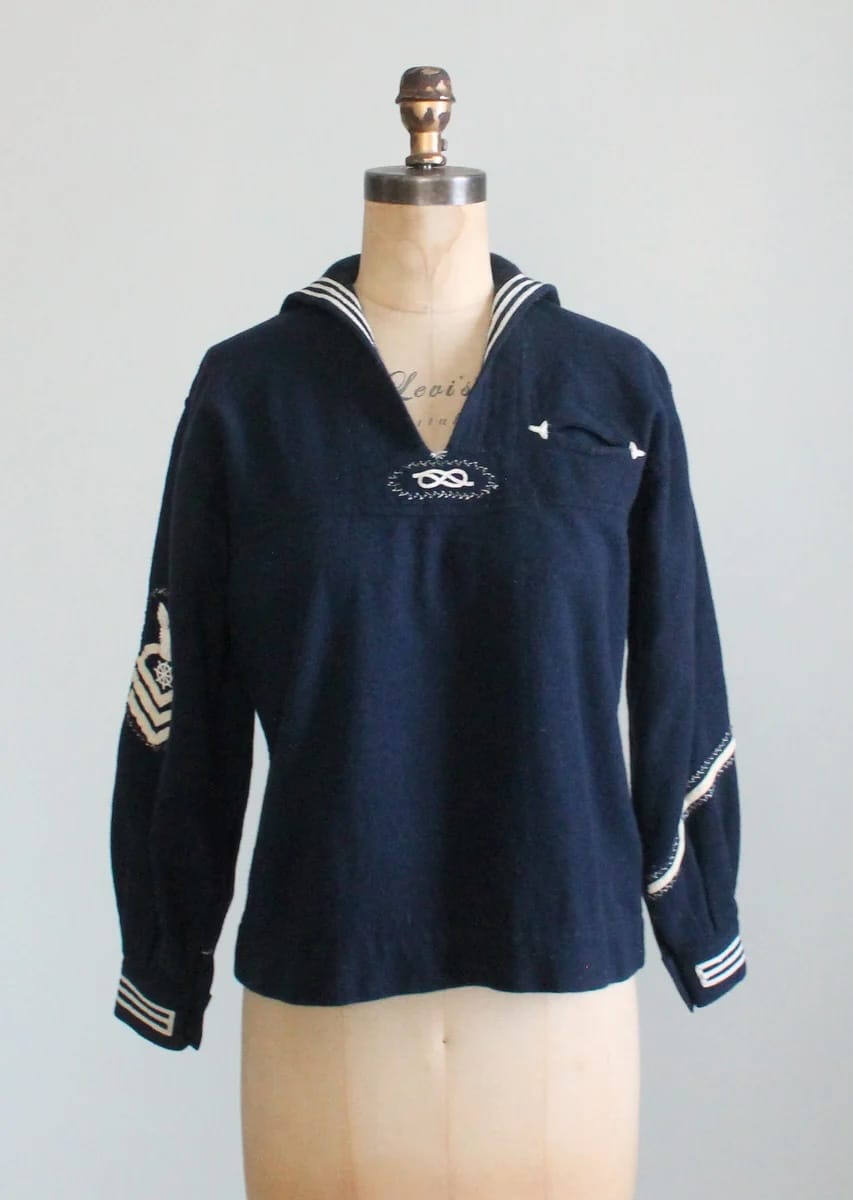
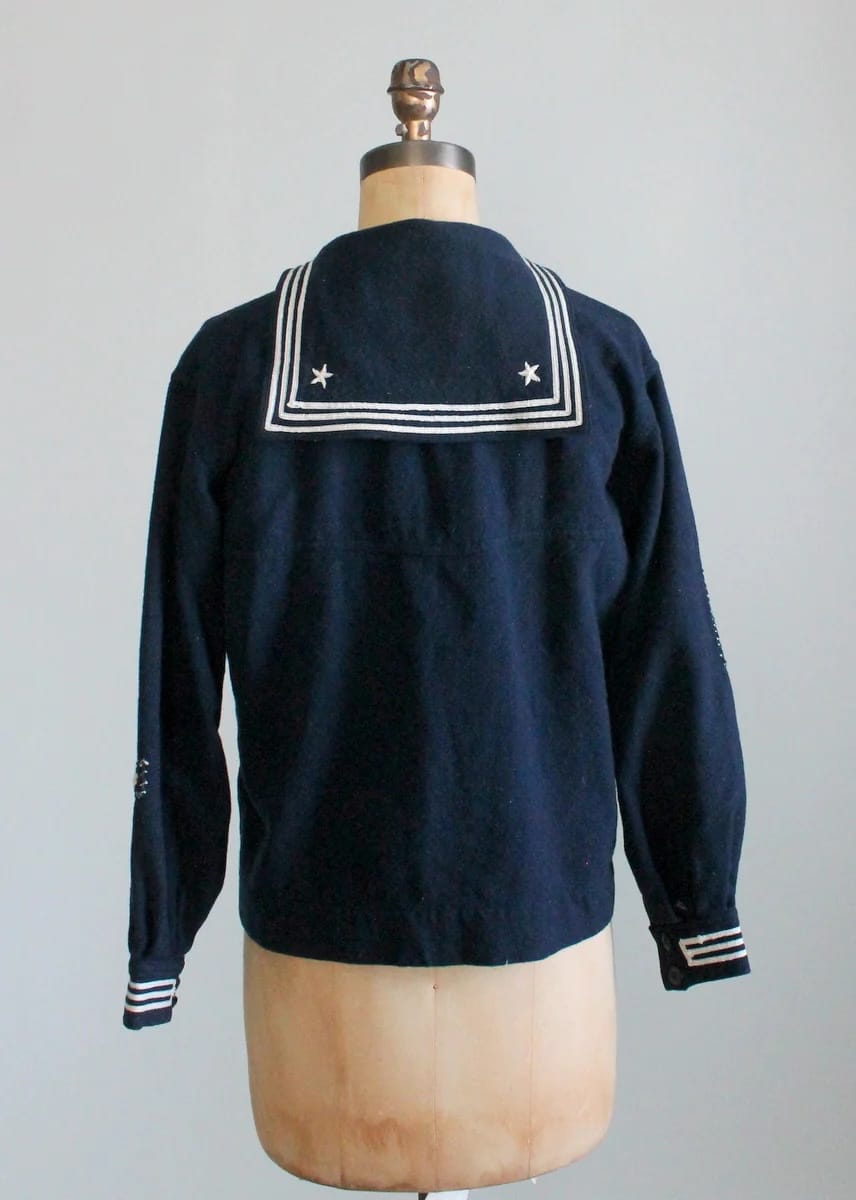
1952 sewing pattern package, Dior's marnière sweater, 1920s U.S. navy middy shirt
Portrait Collar
A portrait collar accompanies a portrait neckline, a wide V-neck with the edges of the V at the points of the shoulder rather than closer to the neck or off the shoulders. The collar itself can vary from a notched construction to a fold-over. With its more formal look, the portrait collar tends to go with cocktail and evening dresses and tops.

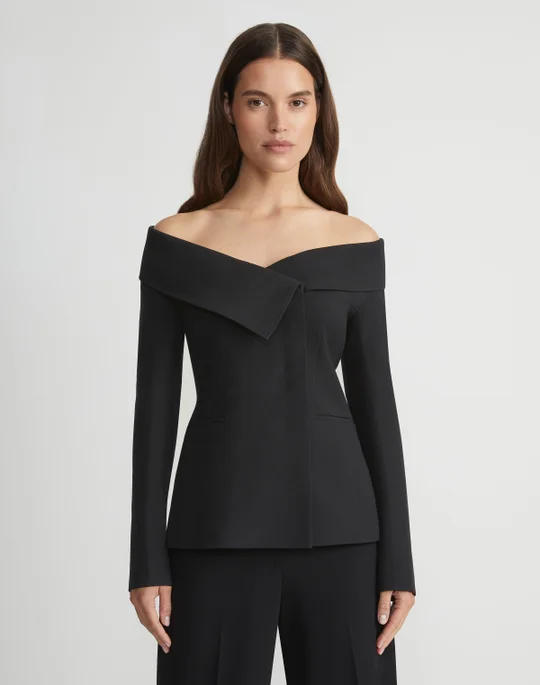
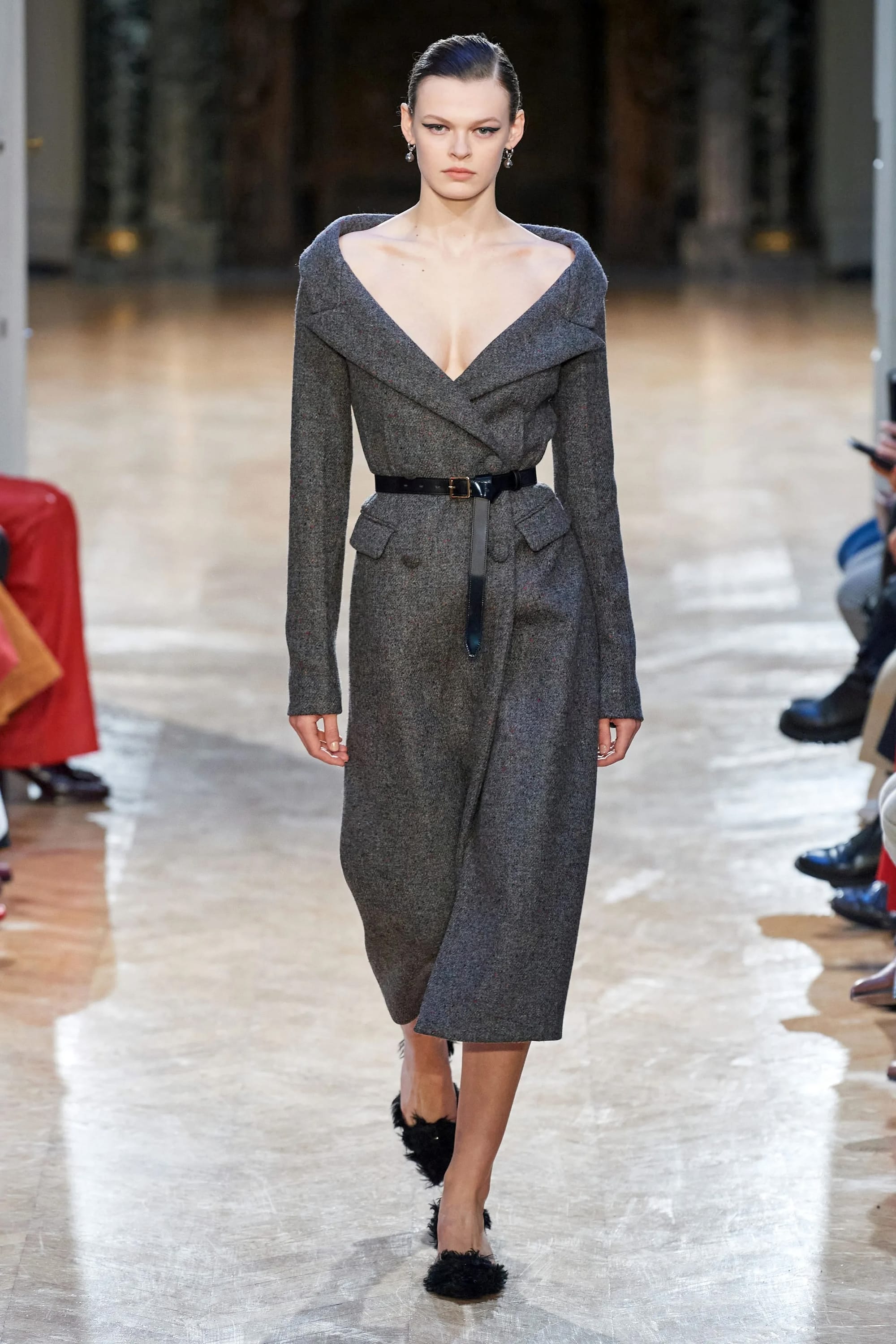
Lafayette 148 portrait collar shirts in white and charcoal, look 1 from Altuzarra's fall 2020 presentation
Rounded Collars
Peter Pan
The Peter Pan collar has tips that are rounded rather than pointed. It's more common in childrenswear. In fashion, it takes on this association to signal ironic demureness, from mod styles to the Manic Pixie Dream Girl of the early 2010s.
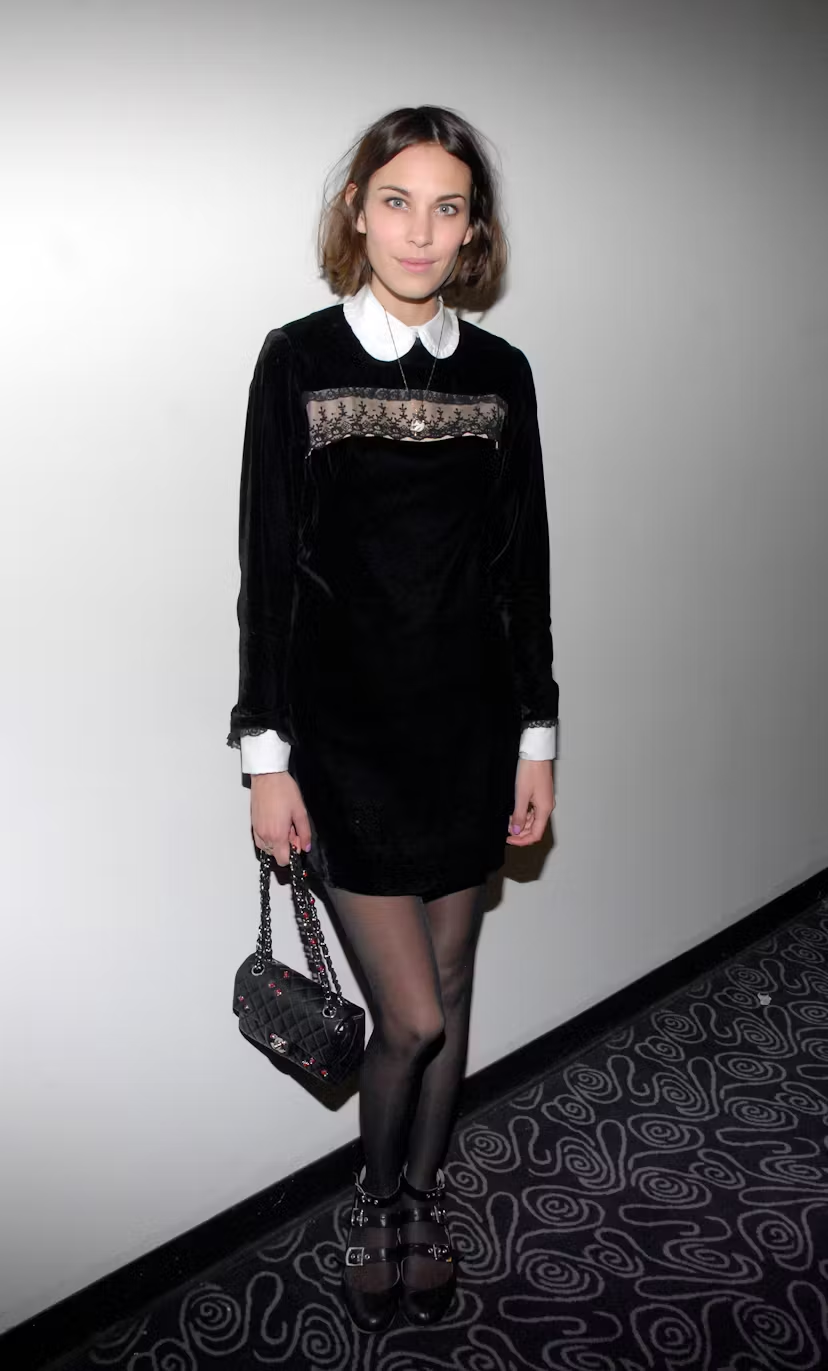
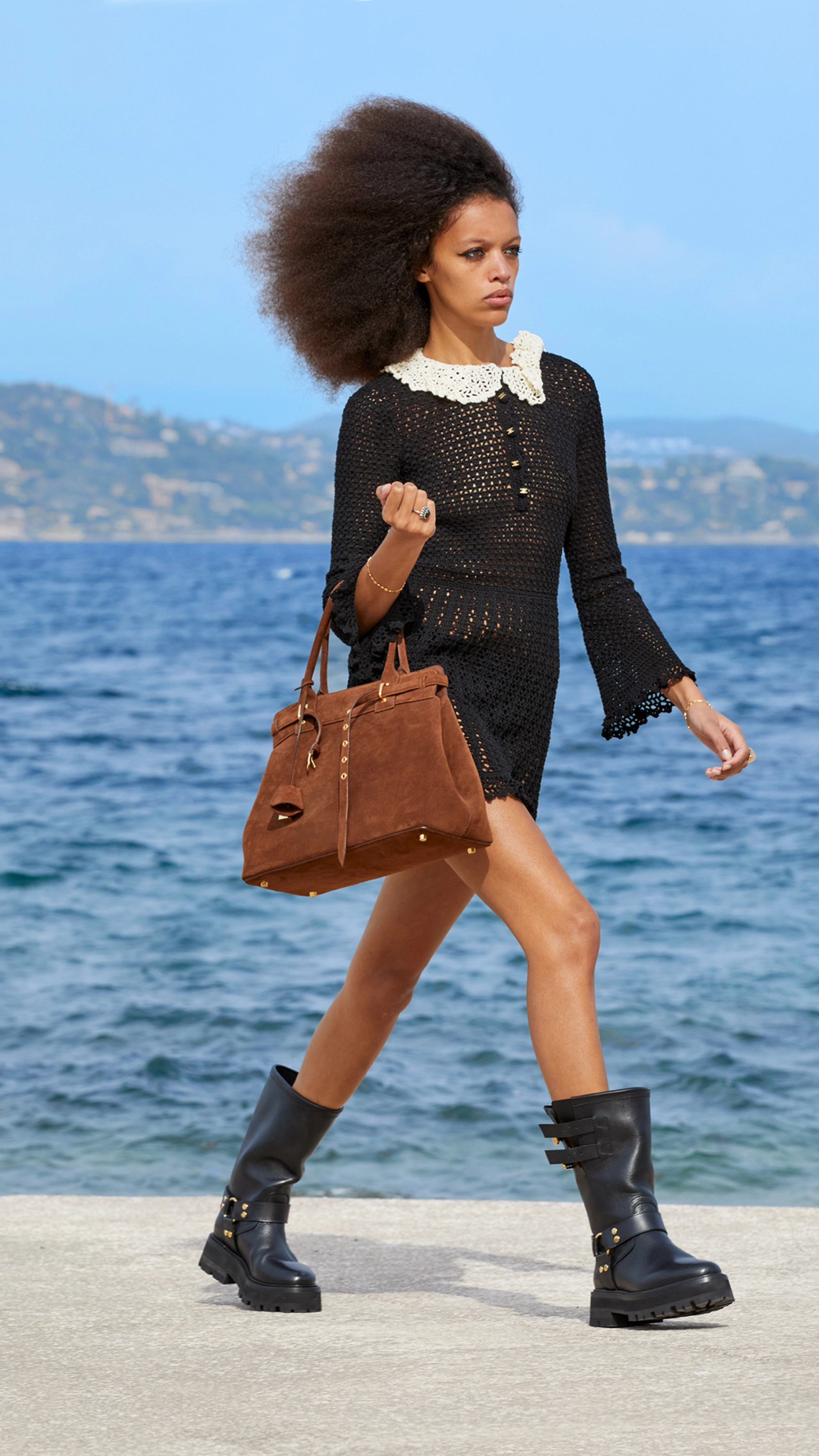
Puritan Collar
The puritan collar, also known as a Bertha collar, has rounded tips, but it's much larger than the Peter Pan, and it's closer to the body than the Peter Pan. Puritanism was a religious reform movement in the Church of England from the late 16th to 18th centuries, and its followers dressed to reflect their aversion for materialistic ostentation.
In 2024, maintaining a large white collar is a form of luxury, and the Puritan collar can be a high fashion look, seen in the Carolina Herrera shirt below. It can also take on an exaggerated childlike quality, out-Manic Pixie-ing even a Peter Pan collar, seen in the second look.
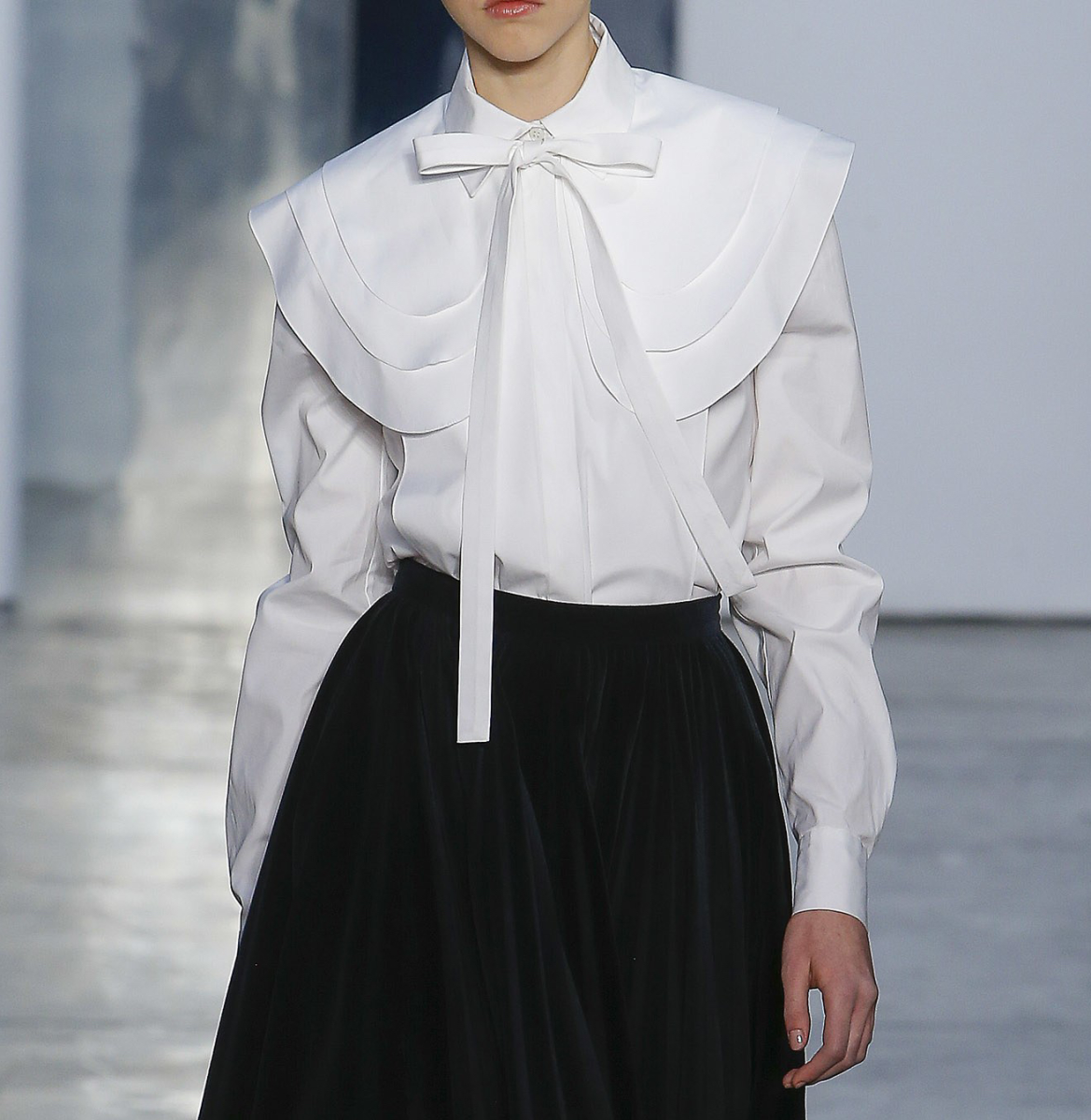
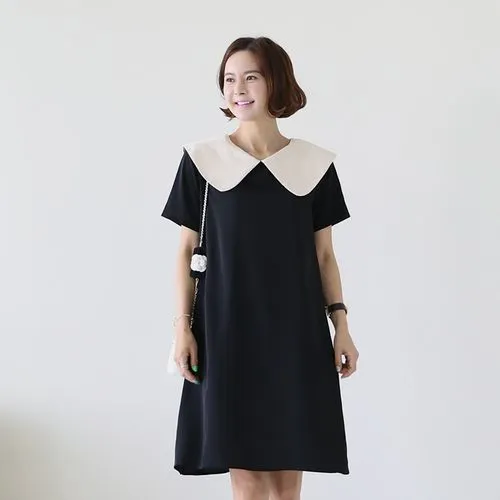
Carolina Herrera fall 2017 and a trapeze dress with a Puritan collar
Pointed Flat
Popularized by film stars in the 1930s and 1940s, the pointed flat collar flows with the clean lines and geometric shapes of Art Deco aesthetics. It represented a move away from the frilly, ornate collars of previous eras and aligned with the image of the modern, working woman.
Unlike dress shirt collars, the pointed flat is constructed without a stand, so it lies flat against the chest and shoulders. The simpler construction makes this collar easier to launder and maintain, and it was popular through the 1950s, often seen on shirtwaist dresses, casual to formal.
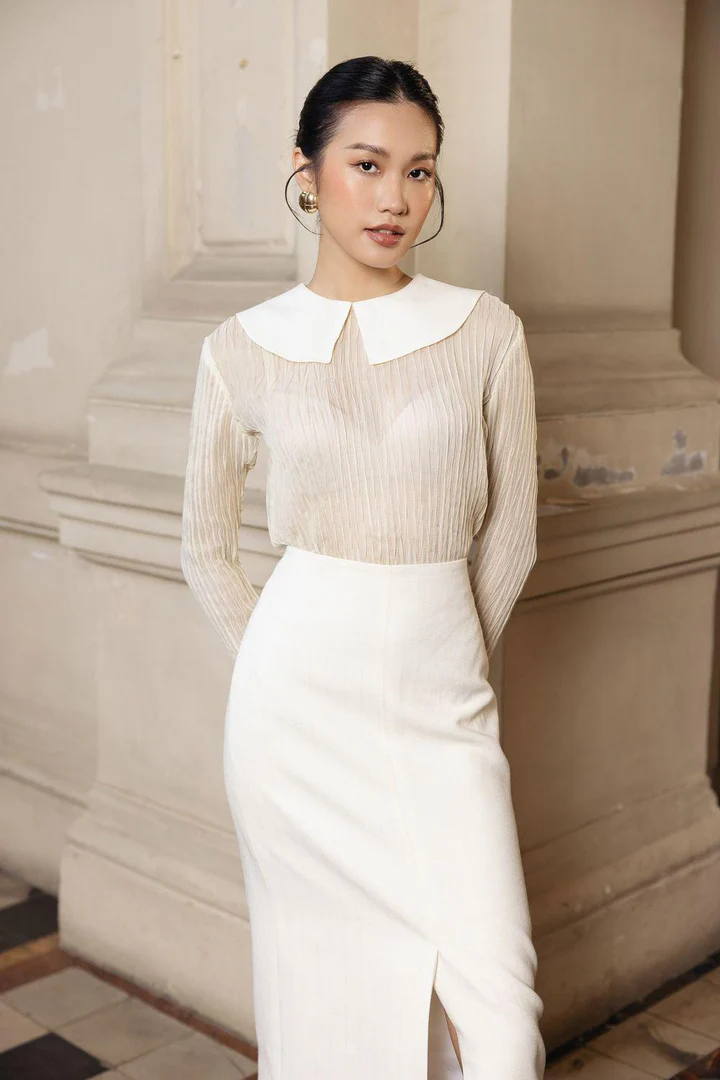
Shawl
A shawl collar is a single piece that curves from the back of the neck, terminating in a roll at the front closure of the garment. It's commonly seen on knits, including thick cardigans and fisherman sweaters, but it can take a more formal turn when rendered in silk, as seen below in Zimmermann's silk wrap dress.

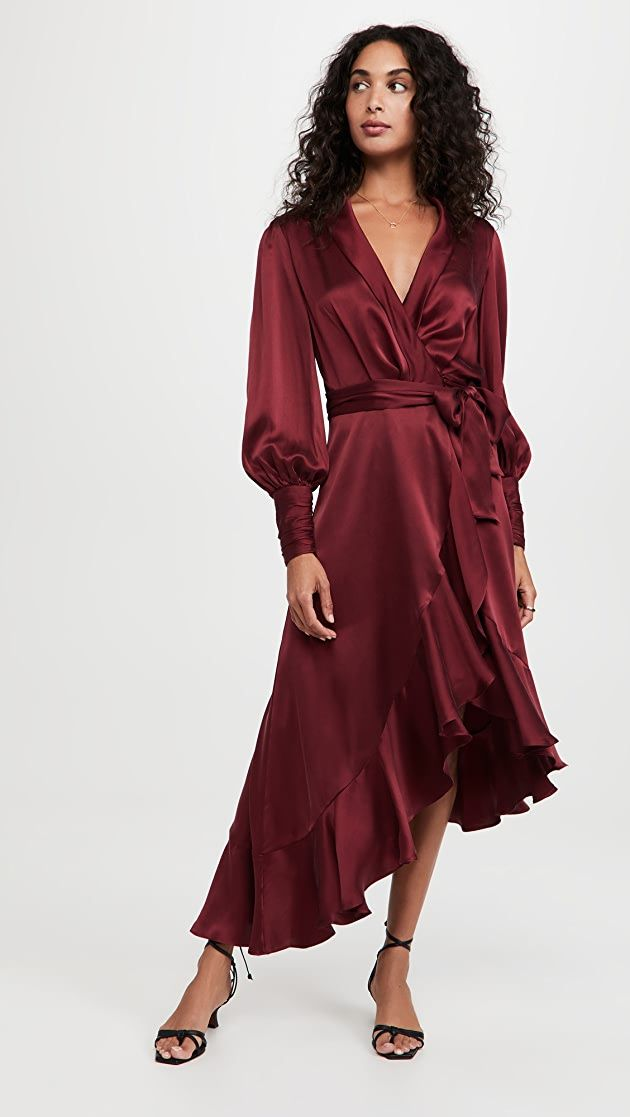
Pendleton's shawl collar shetland cardigan, Zimmermann's silk wrap dress
Jarbot
A Jarbot collar consists of ruffles or frills attached to the neckline, and it's a standalone, removable accessory. The Jarbot is derived from men's neckwear in the 17th and 18th centuries, and it's usually made of lighter, more delicate fabrics like lace, chiffon, or fine cotton.
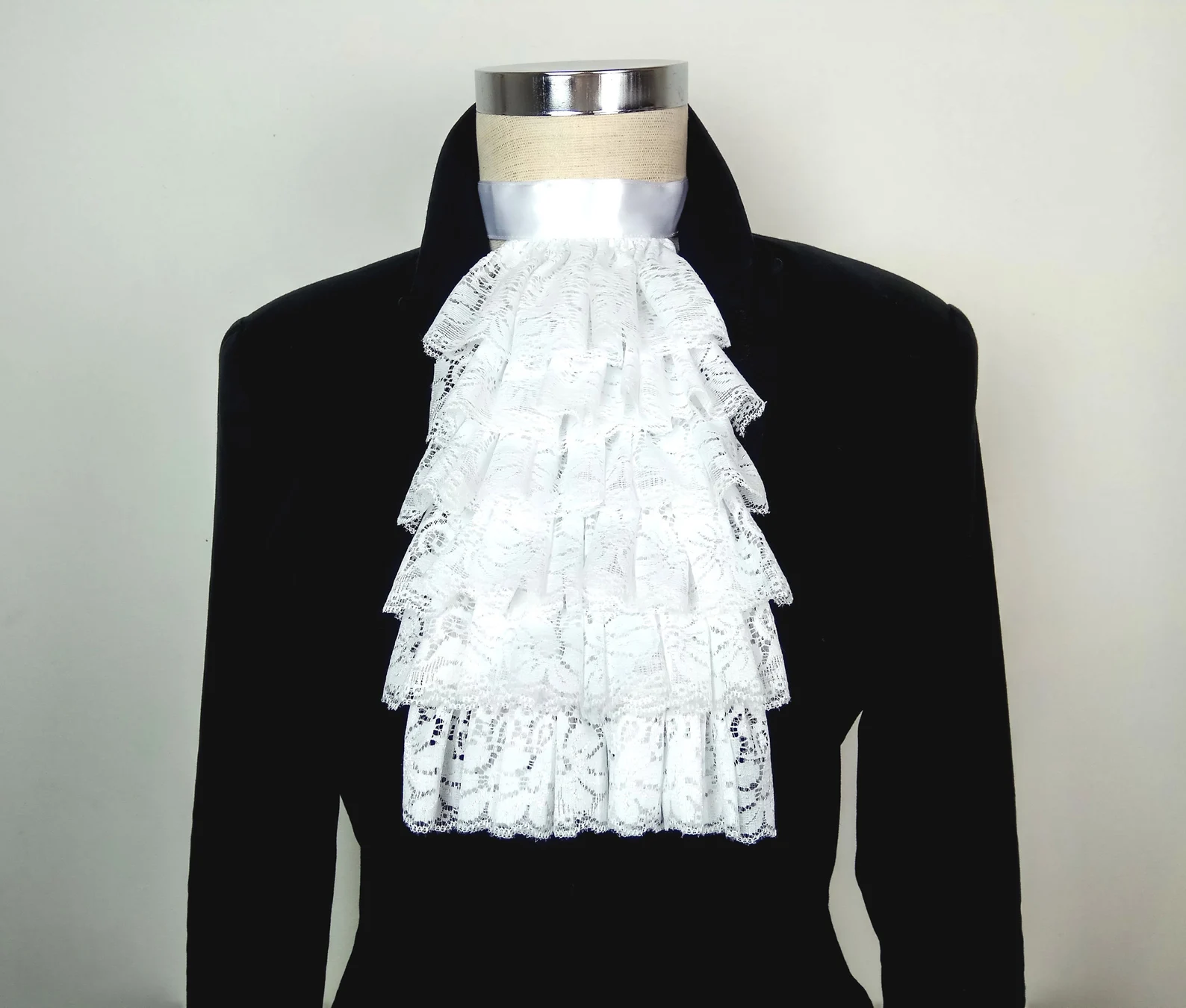
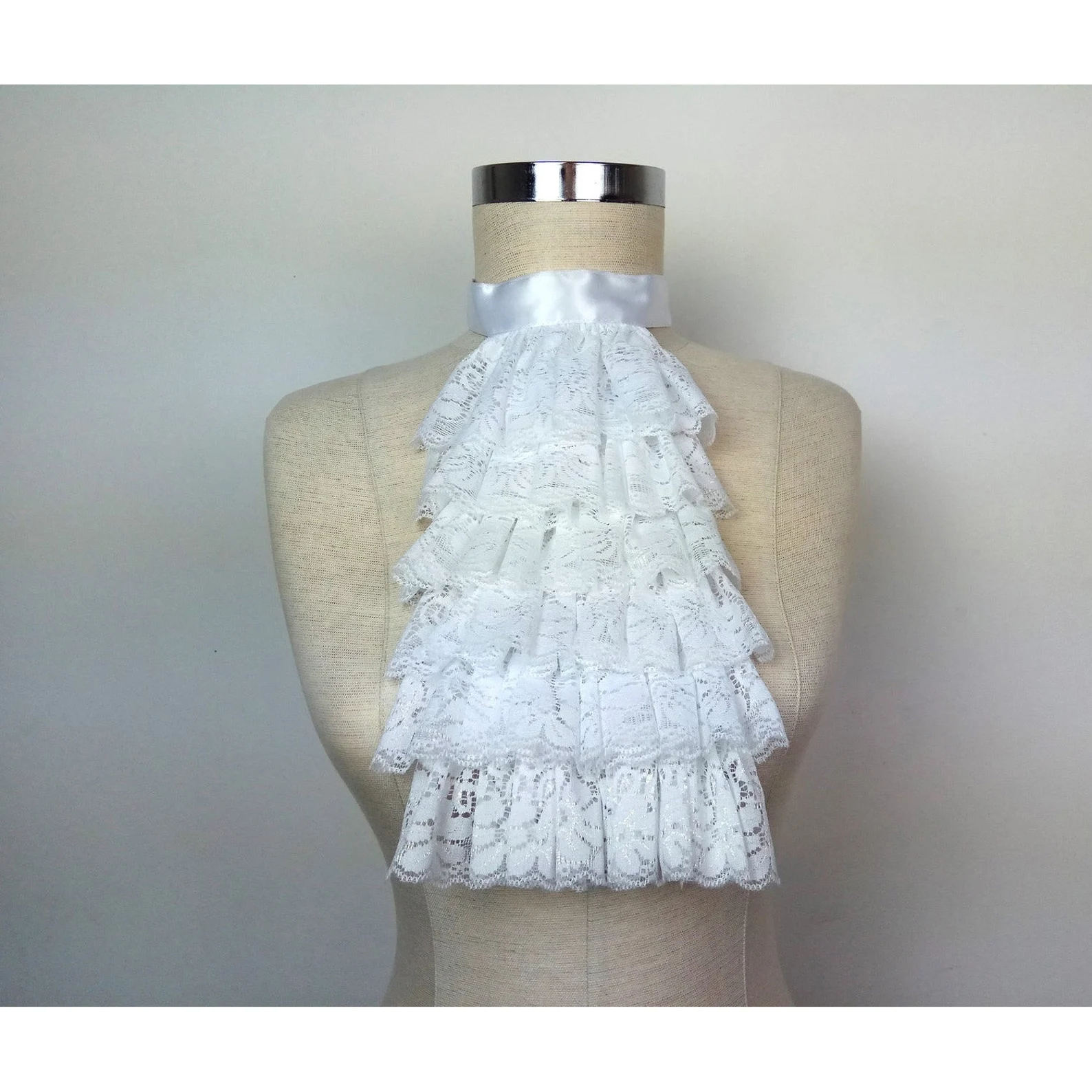
Jarbot collar with a jacket and on a form
Cascade
The 20th century counterpart to the Jarbot is the cascade collar, which also features ruffles. The cascade is more fluid and less structured than the jarbot, and it's typically attached to the garment.
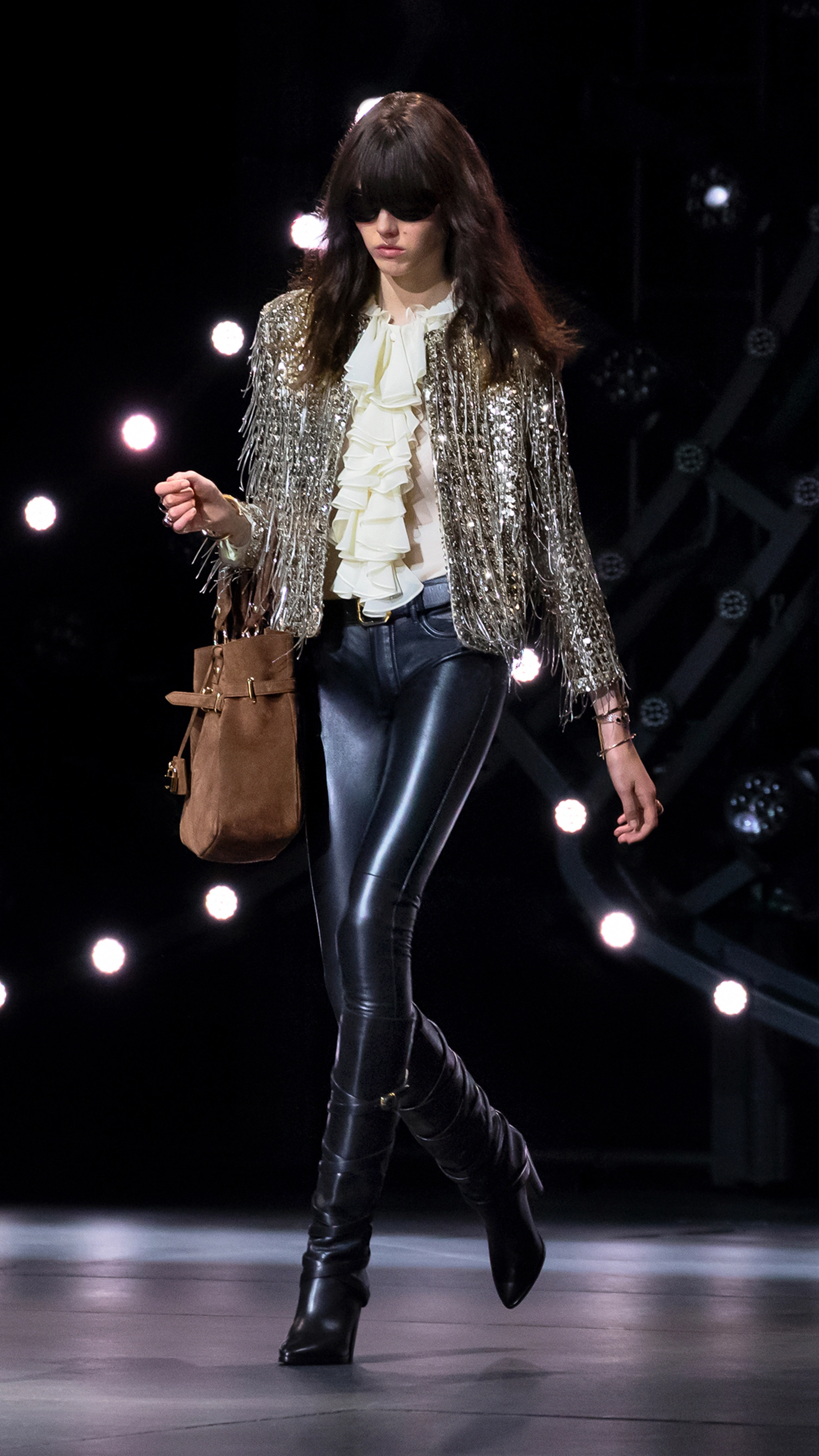
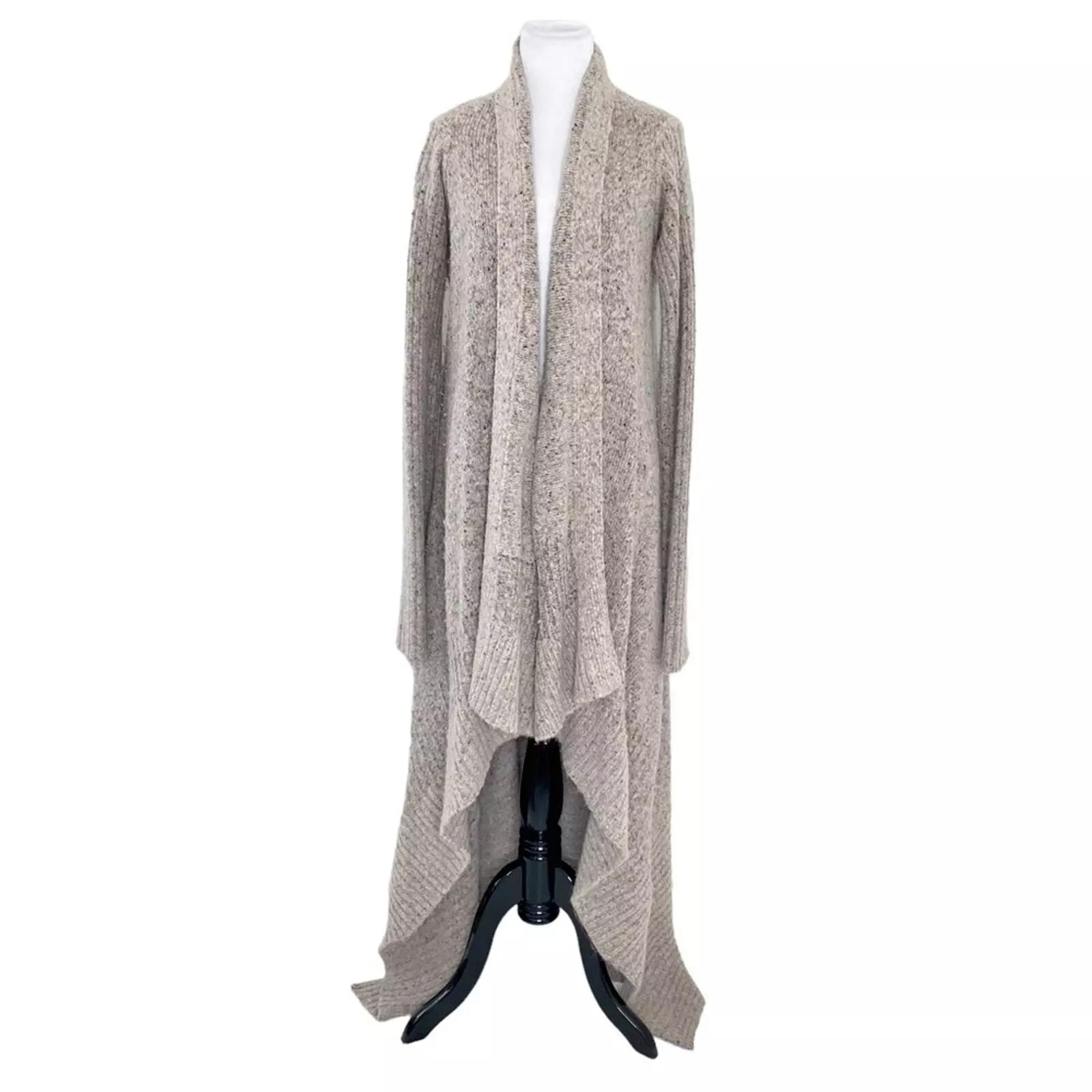
Celine winter 2023, Rick Owens Rick Owens Mountain fall 2012
Ruff
Associated with Queen Elizabeth I, the ruff collar is a large frill that goes all the way around the neck. It was popular in the 16th and 17th centuries. It owes its structure to the development of starch in England in the 1560s. Often made from starched linen cambric and edged with lace, the ruff collar evolved to a detachable construction that can be washed separately from the garment. It was worn by both men and women.
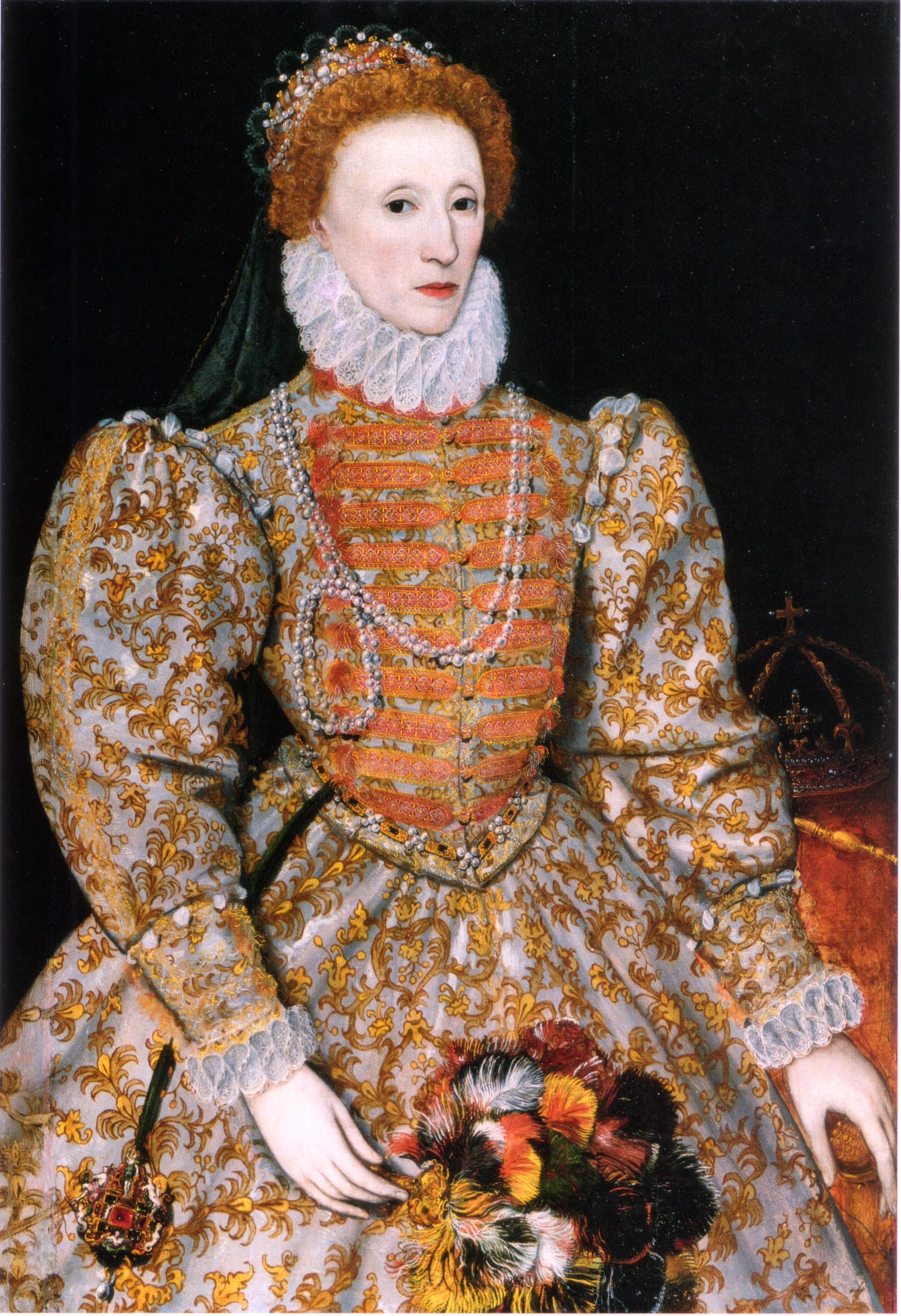
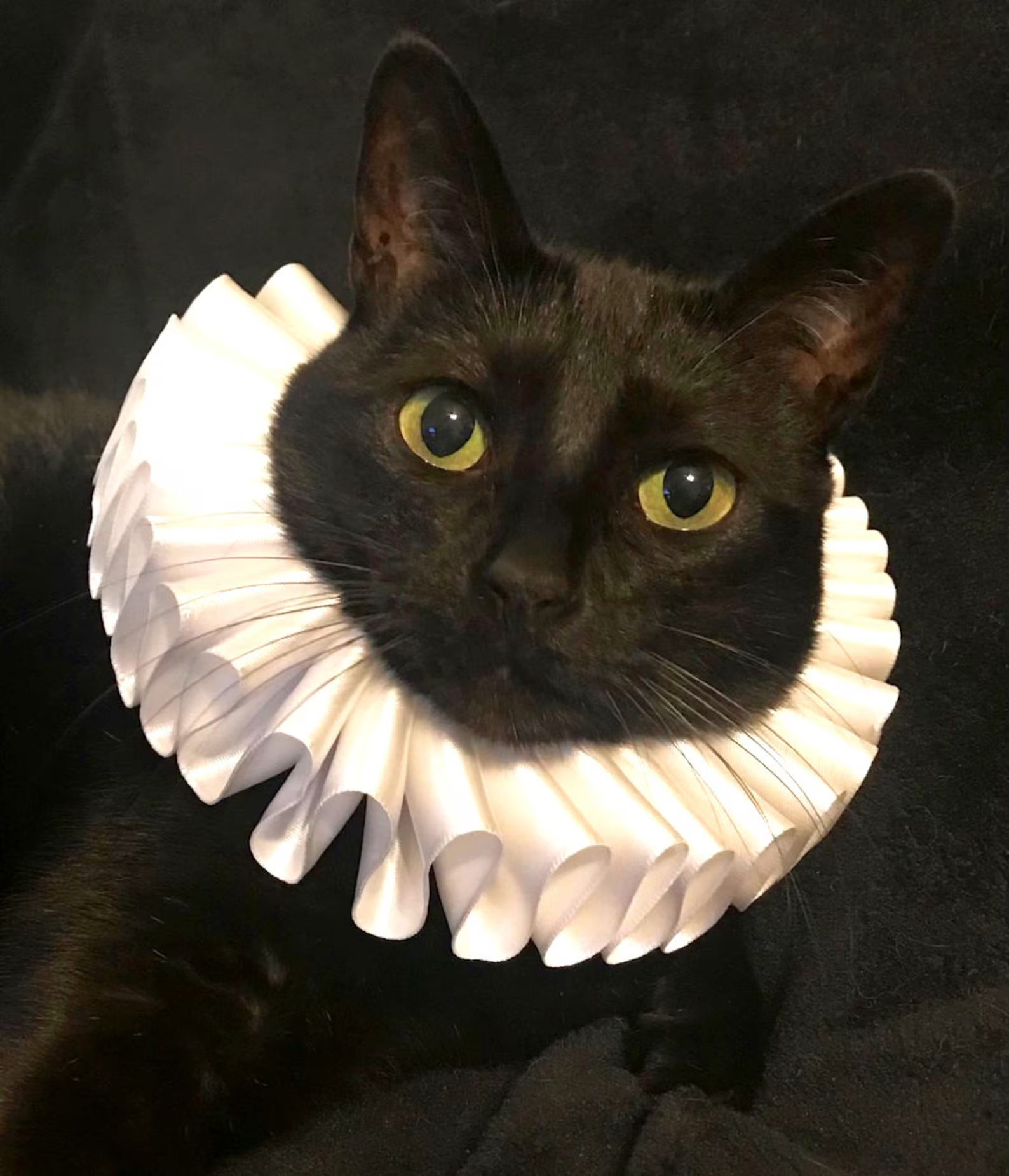
Queen Elizabeth I circa 1575 and a cat in a ruff collar
Band Collars
A band collar is a collar stand without the leaf or cape, which is the part of the collar that folds over. It fastens onto itself, forming a continuous ring around the neck. It can be worn casually or dressed up, depending on the fabric and cut.
The band collar has been a part of traditional Chinese dress for over 2,000 years, and it saw prominence during the Qing Dynasty (1644-1912) in China. It then spread to other Asian countries, becoming a part of traditional dress in places like India, featured in the Nehru jacket.
The collar was introduced to Western fashion with the increase of Western interest in Asian culture in the 19th century, and it gained popularity in the middle of the 20th century. It has come to signify purity in terms of visual minimalism and with its association with clerical uniforms.
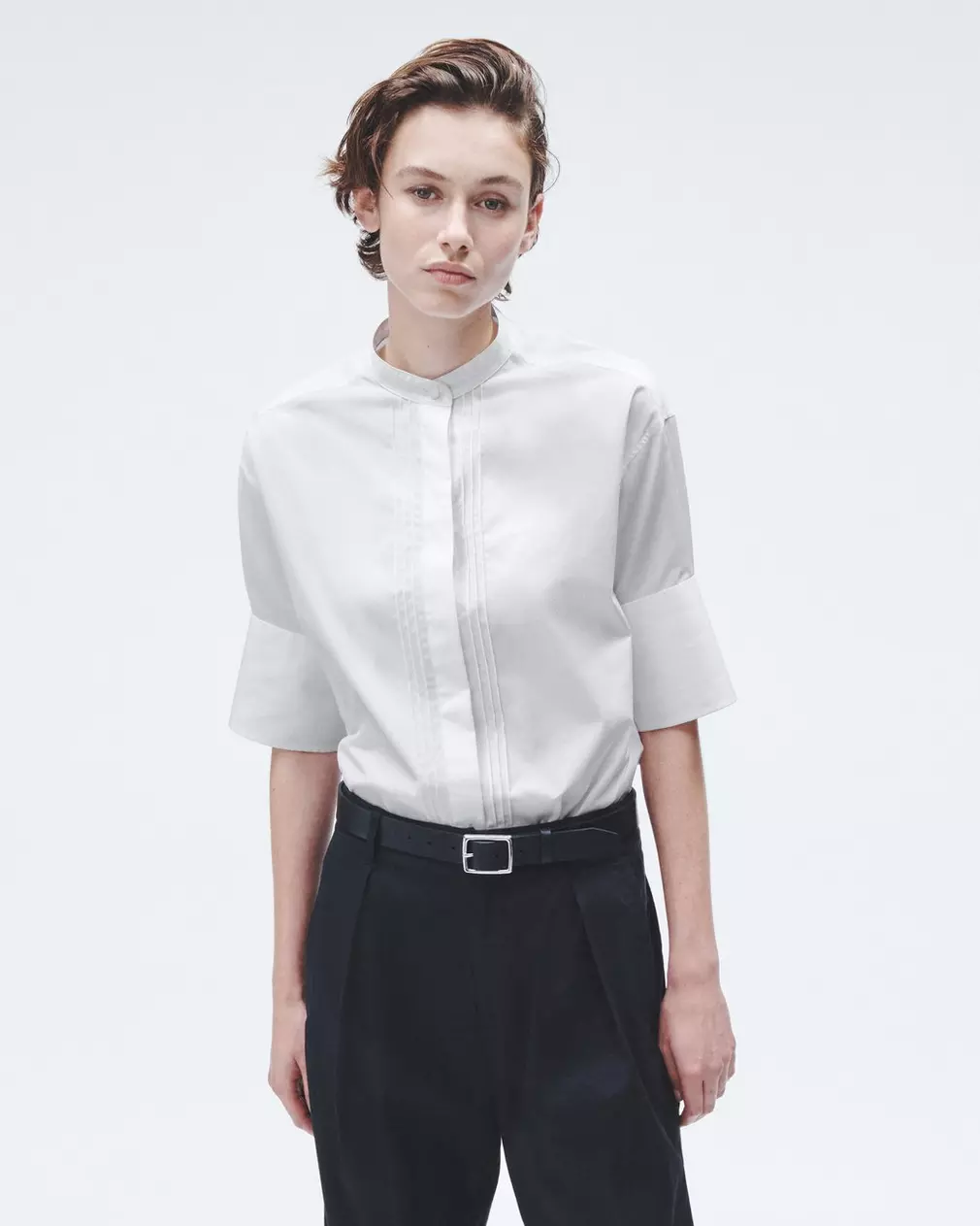
Mandarin Collar
The Mandarin collar is a specific variation of the band collar. It features rounded ends which form a gap in the center, and it looks like the collar of the qipao, or a Chinese "banner dress" originating in the 17th century during Manchu rule.

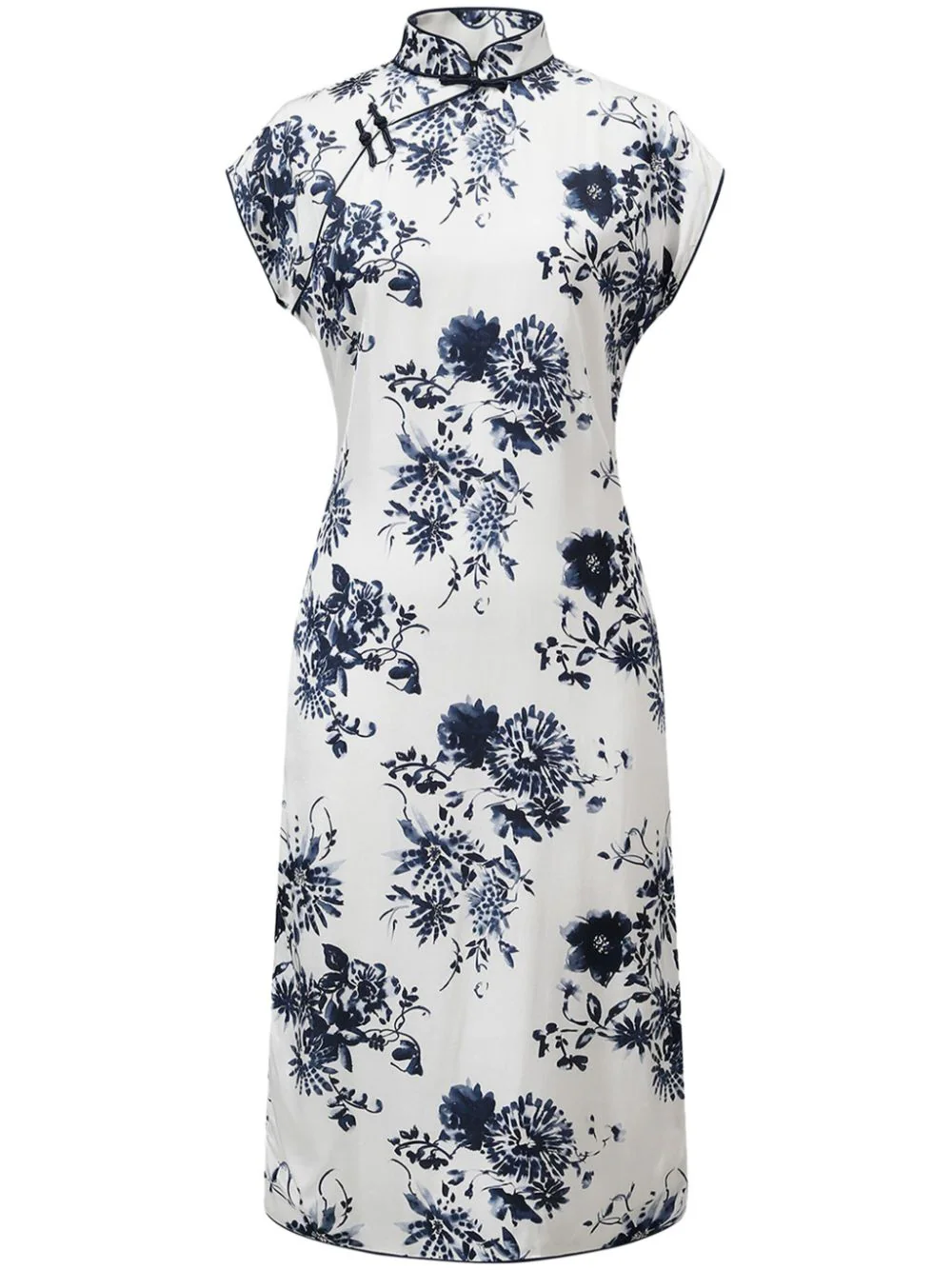
Mandarin collar, and a qipao from Shanghai Tang
